2024 PA Farm Show Culinary Connection Stage

Slide title
Chef Rob Woods from JBJ Soul Kitchen with the finished product!
Button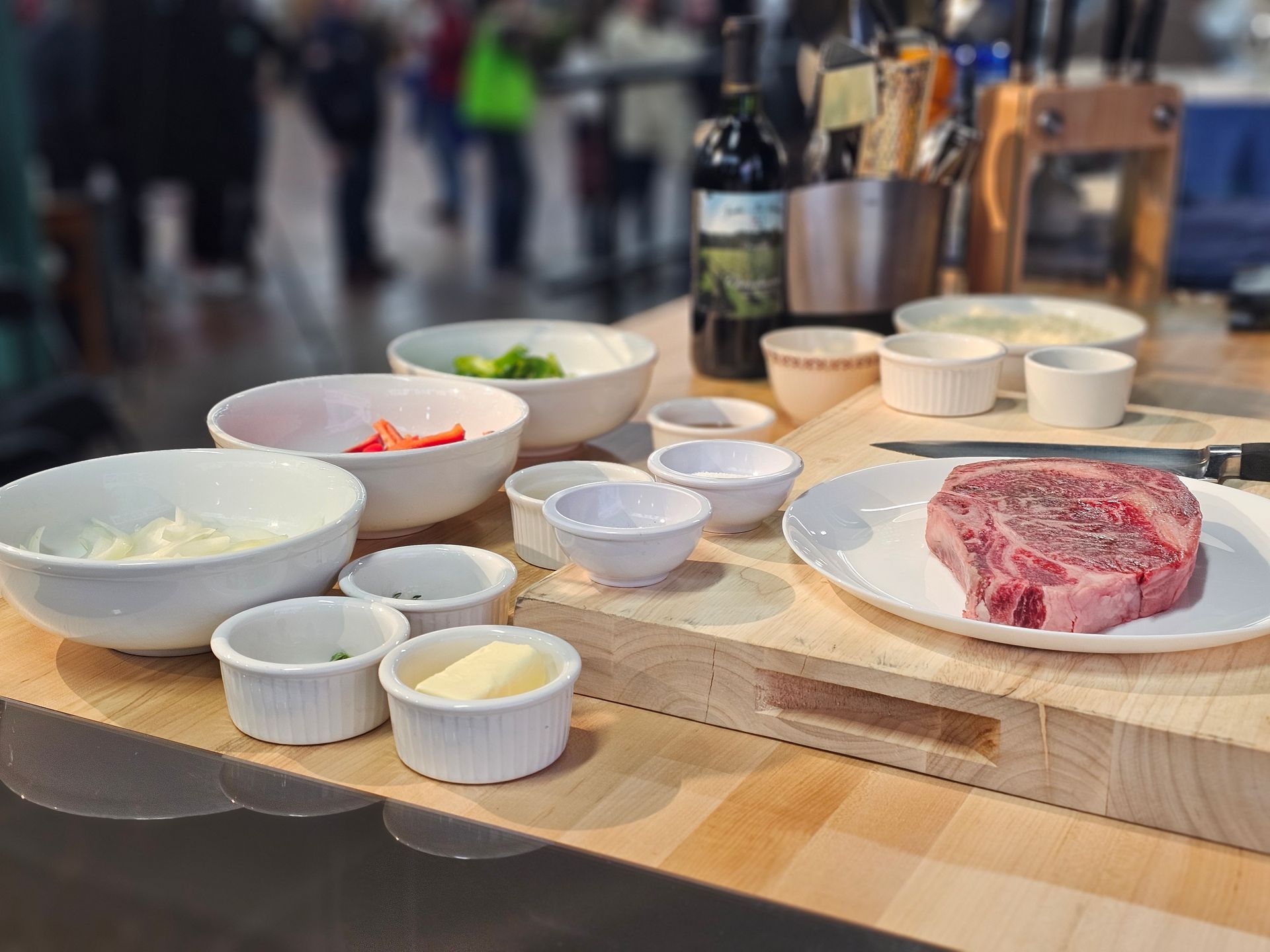
Slide title
Prep Time
Button
Slide title
A delicious Destiny Dairy Bar Bone-In Ribeye
Button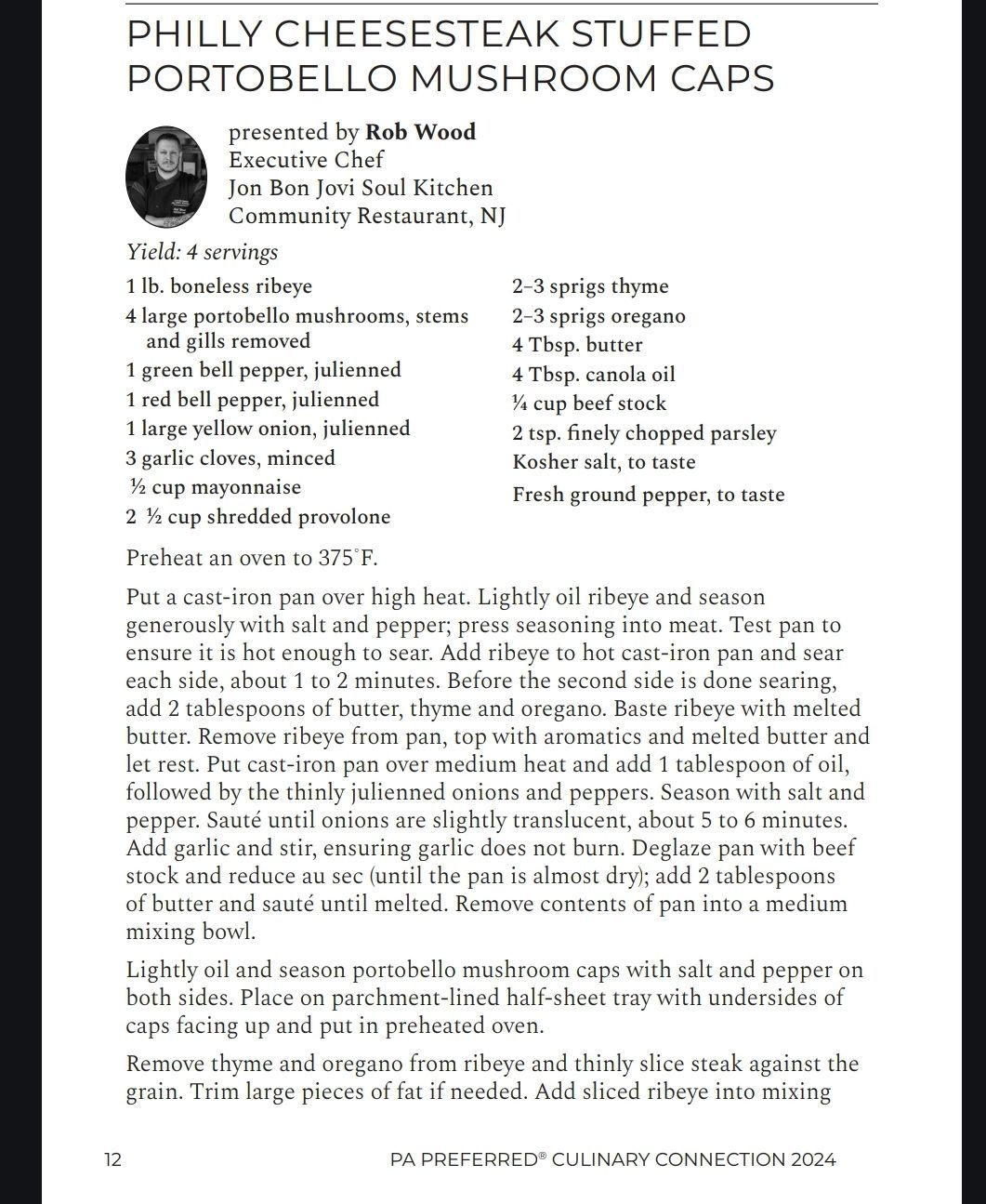
Slide title
Write your caption hereButton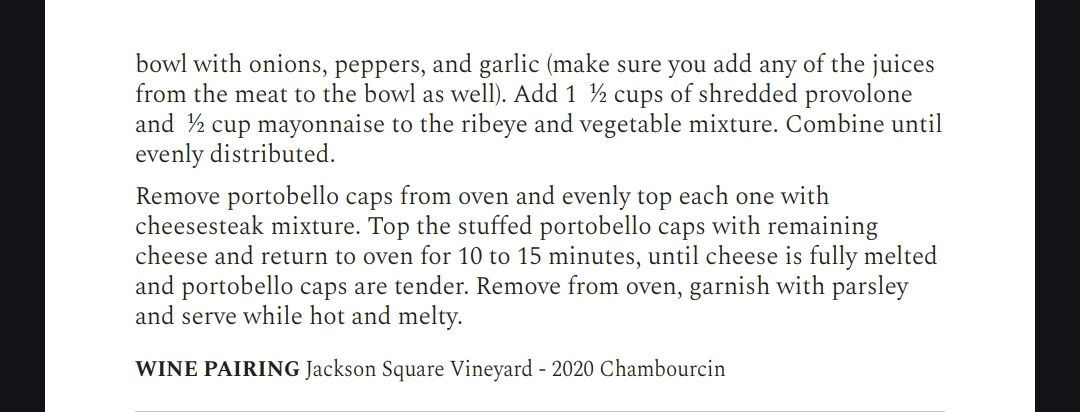
Slide title
Write your caption hereButton
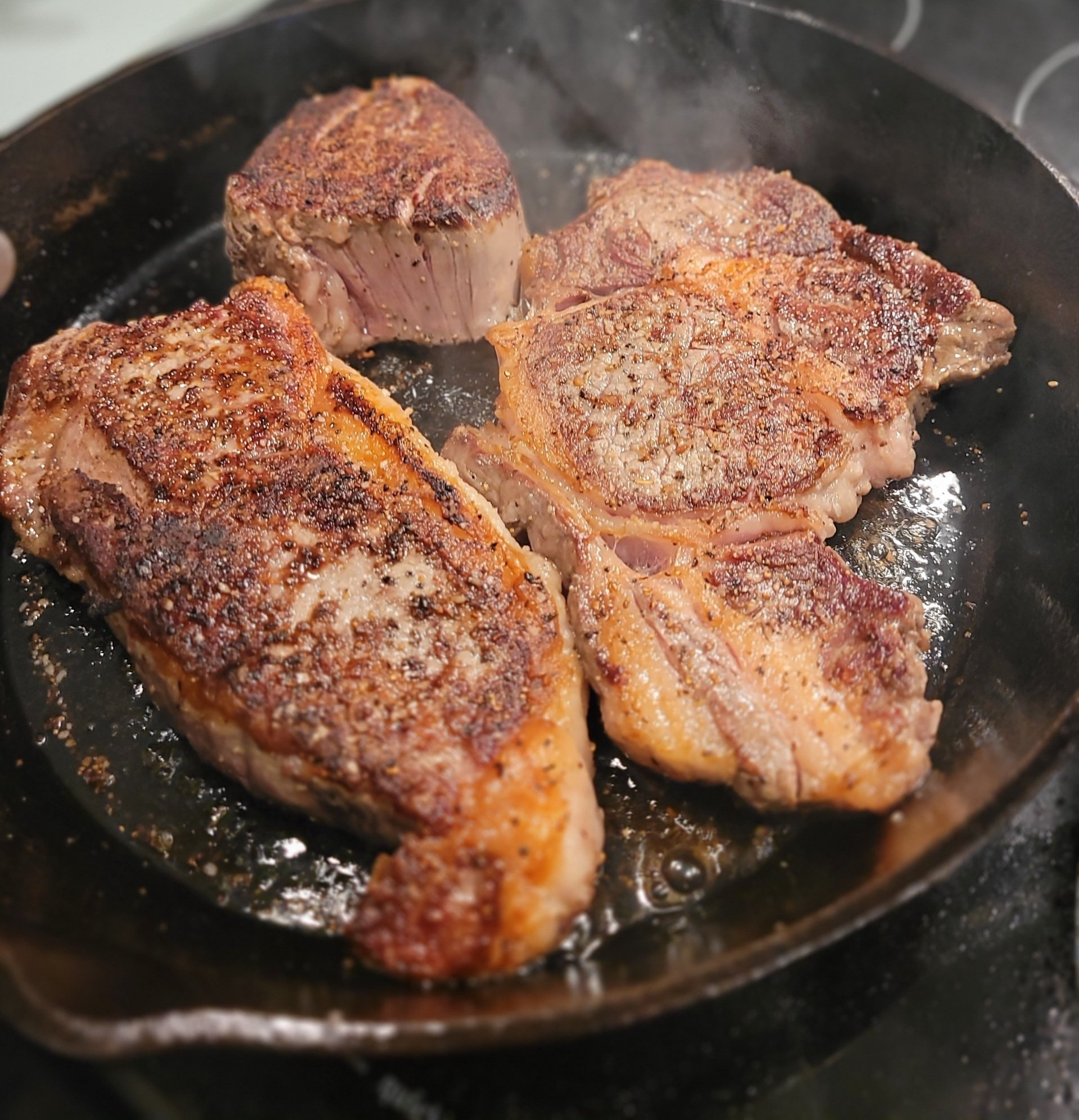
Wagyu Dairy Cross Beef
Breeding Holstein or other dairy females to Wagyu bulls is already commonplace in Japan, Australia and increasingly popular in Canada with Wagyu X Holstein deemed as the ultimate cross in Japan because Holsteins are the next highest marbling cattle breed behind Wagyus, producing meat superior in quality to Wagyu crossed with any other breed.
Most Japanese consumers prefer Wagyu X Holstein F1 (that means 1st generation) cross beef when Wagyu is not available. Wagyu X Holstein F1 cattle currently comprise approximately 25% of the cattle harvested for beef in Japan.
Filet Mignon
The filet is without a doubt one of the most sought after cuts in restaurants around the world. It's more expensive than any other cut and many would argue it is unbeatable in terms of mouthfeel and tenderness. This cut comes from the tenderloin area of the cow which is not worked very hard, making it a very tender and lean cut of beef. In addition to its prized tenderness, Filet Mignon comes in a precious limited supply. Typically, the yield of the tenderloin is as small as 10 to 12 pounds total per animal.
Filet has a sweet flavor and delicate tenderness. Because this muscle is mostly sedentary, it is very supple. In Wagyu, the Filet Mignon has more marbling, bringing even more velvety decadence and flavor than Filet Mignon cuts from other breeds of cattle.
Filet Mignon is prepared in many different ways, but to get the most from this cut you should use a dry heat method of cooking. Most prefer to grill or saute this cut using a very hot pan. Filets especially should not be cooked past Medium Rare, to best exhibit the tenderness the cut is known for.
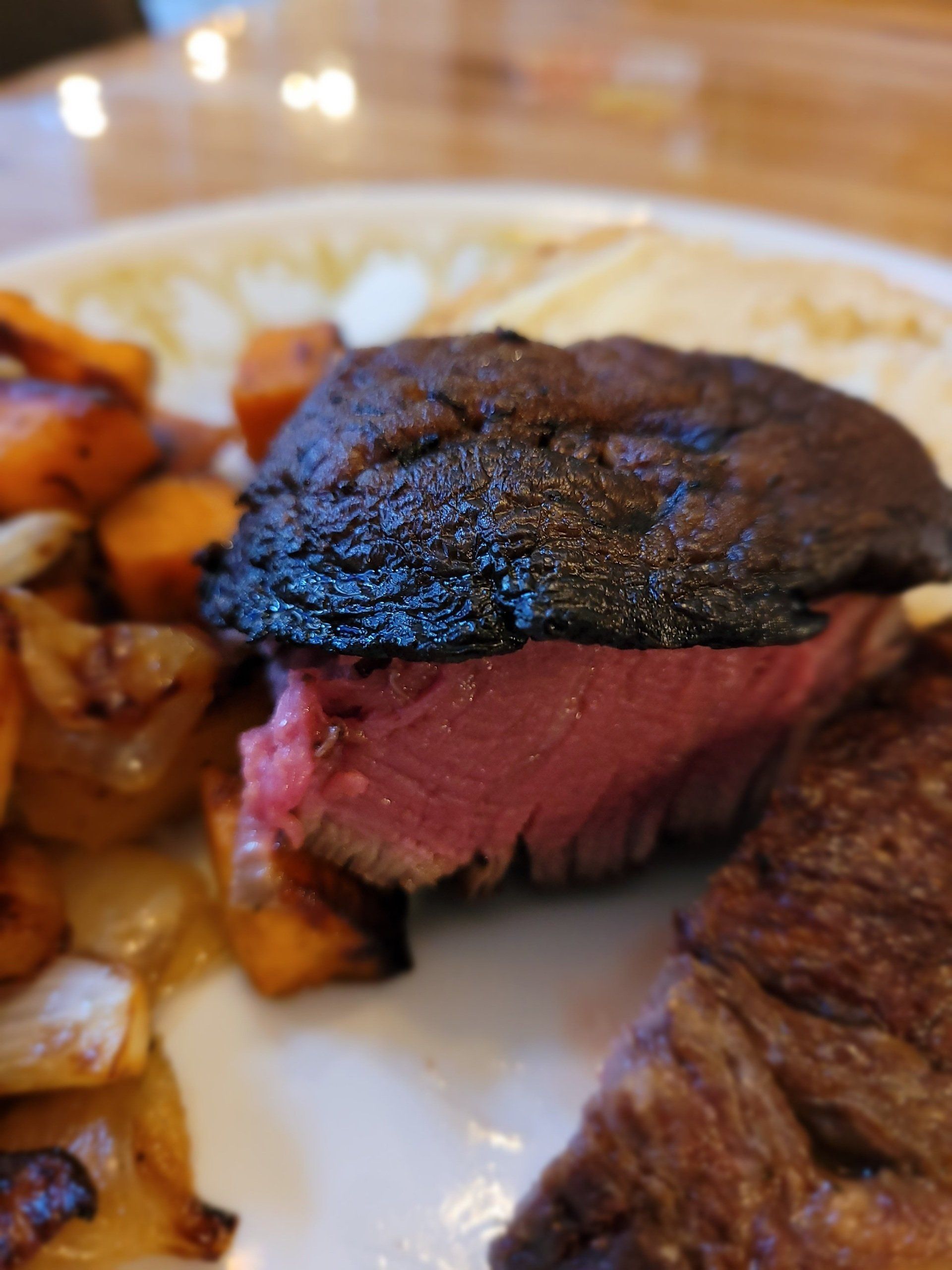
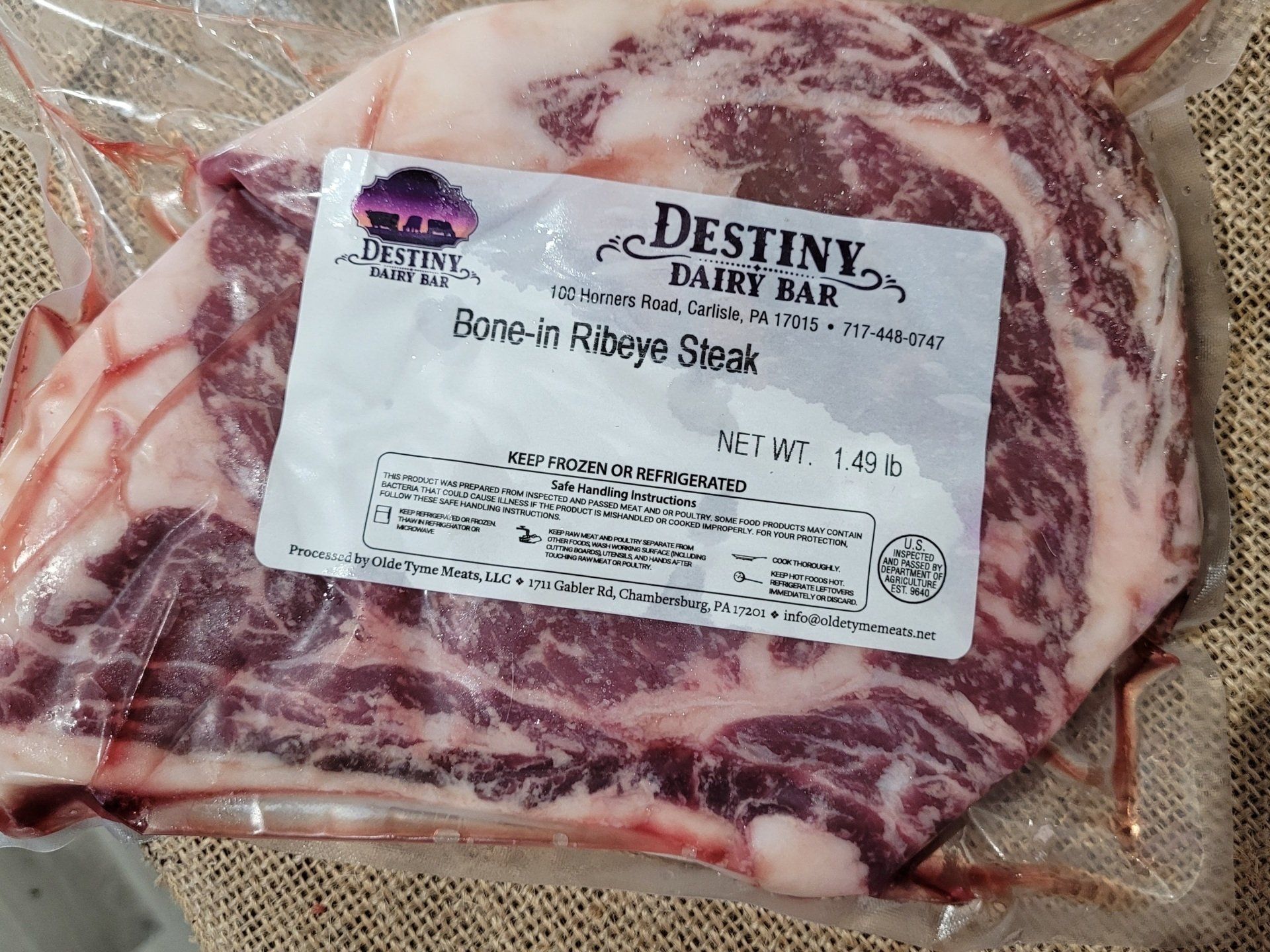
Ribeye
The Ribeye comes from the rib of the cow, and since the rib cage is used very little for movement and doesn't bear much weight, the ribeye is well marbled and tender with a layer of fat surrounding the cut. When this fat melts during cooking, the flavor is spread throughout the meat, bringing amazing flavor to every bite. Wagyu Ribeyes tend to be intensely marbled, epitomizing the desired traits!
Ribeyes can be served with the bone removed, or left in (which adds even more flavor), depending on the butcher or consumer's preference. To cook, it's best to first sear on high heat to seal in the juices, then finish on low heat either in the oven, on the stove or the grill.
Now available: TOMAHAWKS! Each tomahawk steak is between 2 1/2 and 3 1/2 lbs and is sure to be a hit at your next big meal!
2024 PA Farm Show Culinary Connection

2024 PA Farm Show Culinary Connection Stage
Write your caption hereButton
2024 PA Farm Show Culinary Connection Stage
Write your caption hereButton
2024 PA Farm Show Culinary Connection Stage
Write your caption hereButton
Slide title
Write your caption hereButton
Slide title
Write your caption hereButton

Wagyu Dairy Cross Beef
Breeding Holstein or other dairy females to Wagyu bulls is already commonplace in Japan, Australia and increasingly popular in Canada with Wagyu X Holstein deemed as the ultimate cross in Japan because Holsteins are the next highest marbling cattle breed behind Wagyus, producing meat superior in quality to Wagyu crossed with any other breed.
Most Japanese consumers prefer Wagyu X Holstein F1 (that means 1st generation) cross beef when Wagyu is not available. Wagyu X Holstein F1 cattle currently comprise approximately 25% of the cattle harvested for beef in Japan.

Filet Mignon
The filet is without a doubt one of the most sought after cuts in restaurants around the world. It's more expensive than any other cut and many would argue it is unbeatable in terms of mouthfeel and tenderness. This cut comes from the tenderloin area of the cow which is not worked very hard, making it a very tender and lean cut of beef. In addition to its prized tenderness, Filet Mignon comes in a precious limited supply. Typically, the yield of the tenderloin is as small as 10 to 12 pounds total per animal.
Filet has a sweet flavor and delicate tenderness. Because this muscle is mostly sedentary, it is very supple. In Wagyu, the Filet Mignon has more marbling, bringing even more velvety decadence and flavor than Filet Mignon cuts from other breeds of cattle.
Filet Mignon is prepared in many different ways, but to get the most from this cut you should use a dry heat method of cooking. Most prefer to grill or saute this cut using a very hot pan. Filets especially should not be cooked past Medium Rare, to best exhibit the tenderness the cut is known for.

Ribeye
The Ribeye comes from the rib of the cow, and since the rib cage is used very little for movement and doesn't bear much weight, the ribeye is well marbled and tender with a layer of fat surrounding the cut. When this fat melts during cooking, the flavor is spread throughout the meat, bringing amazing flavor to every bite. Wagyu Ribeyes tend to be intensely marbled, epitomizing the desired traits!
Ribeyes can be served with the bone removed, or left in (which adds even more flavor), depending on the butcher or consumer's preference. To cook, it's best to first sear on high heat to seal in the juices, then finish on low heat either in the oven, on the stove or the grill.
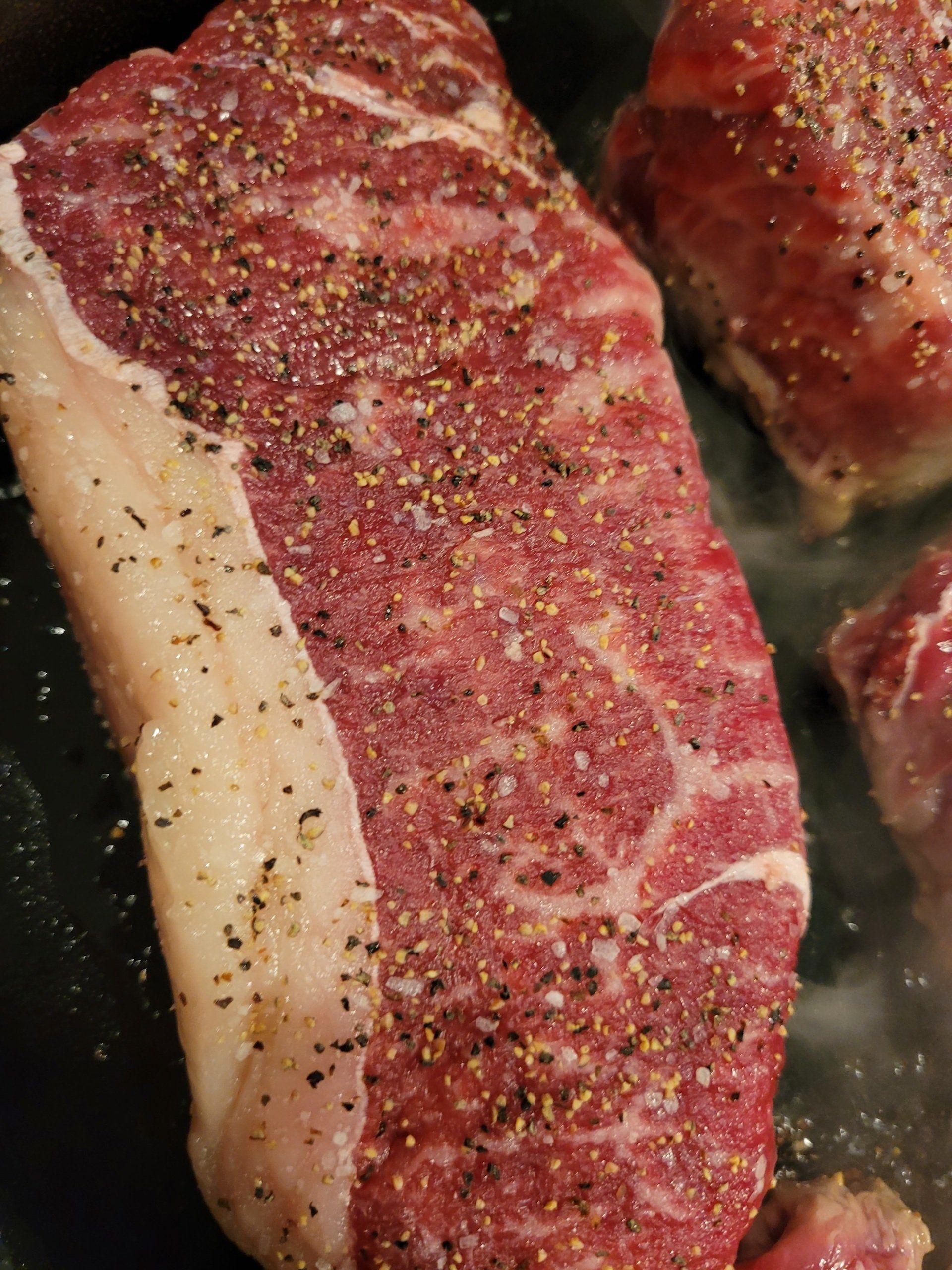
New York Strip
The Strip Steak comes from the short loin and is one of the most popular cuts in the country. The strip is actually part of the T-Bone, or Porterhouse Steak, both of which include the strip and tenderloin on either side of the bone, but if you ask me, you can never get the doneness correct for both pieces, so best to cut the bone out and eat them both separately!
On the spectrum of fat content, Strip Steaks are intermediate, falling between the tenderloin and a ribeye for a balanced experience of flavor and texture. In Wagyu, the Strip can house some of the most dense and delicate veins of marbling, exaggerating the already prevalent qualities and making it one of the best cuts of Wagyu beef, and I will tell you, as someone who would never typically choose a strip, it was easily my favorite single cut of our beef.
To cook, keep it simple. You can trim some excess edge fat to reduce flair ups, cook quickly over high heat on the grill, or broil or pan-fry

WAGYU DAIRY CROSS BEEF
Breeding Holstein or other dairy females to Wagyu bulls is already commonplace in Japan, Australia and increasingly popular in Canada with Wagyu X Holstein deemed as the ultimate cross in Japan because Holsteins are the next highest marbling cattle breed behind Wagyus, producing meat superior in quality to Wagyu crossed with any other breed.
Most Japanese consumers prefer Wagyu X Holstein F1 (that means 1st generation) cross beef when Wagyu is not available. Wagyu X Holstein F1 cattle currently comprise approximately 25% of the cattle harvested for beef in Japan.
FILET MIGNON
The filet is without a doubt one of the most sought after cuts in restaurants around the world. It's more expensive than any other cut and many would argue it is unbeatable in terms of mouthfeel and tenderness. This cut comes from the tenderloin area of the cow which is not worked very hard, making it a very tender and lean cut of beef. In addition to its prized tenderness, Filet Mignon comes in a precious limited supply. Typically, the yield of the tenderloin is as small as 10 to 12 pounds total per animal.
Filet has a sweet flavor and delicate tenderness. Because this muscle is mostly sedentary, it is very supple. In Wagyu, the Filet Mignon has more marbling, bringing even more velvety decadence and flavor than Filet Mignon cuts from other breeds of cattle.
Filet Mignon is prepared in many different ways, but to get the most from this cut you should use a dry heat method of cooking. Most prefer to grill or saute this cut using a very hot pan. Filets especially should not be cooked past Medium Rare, to best exhibit the tenderness the cut is known for.

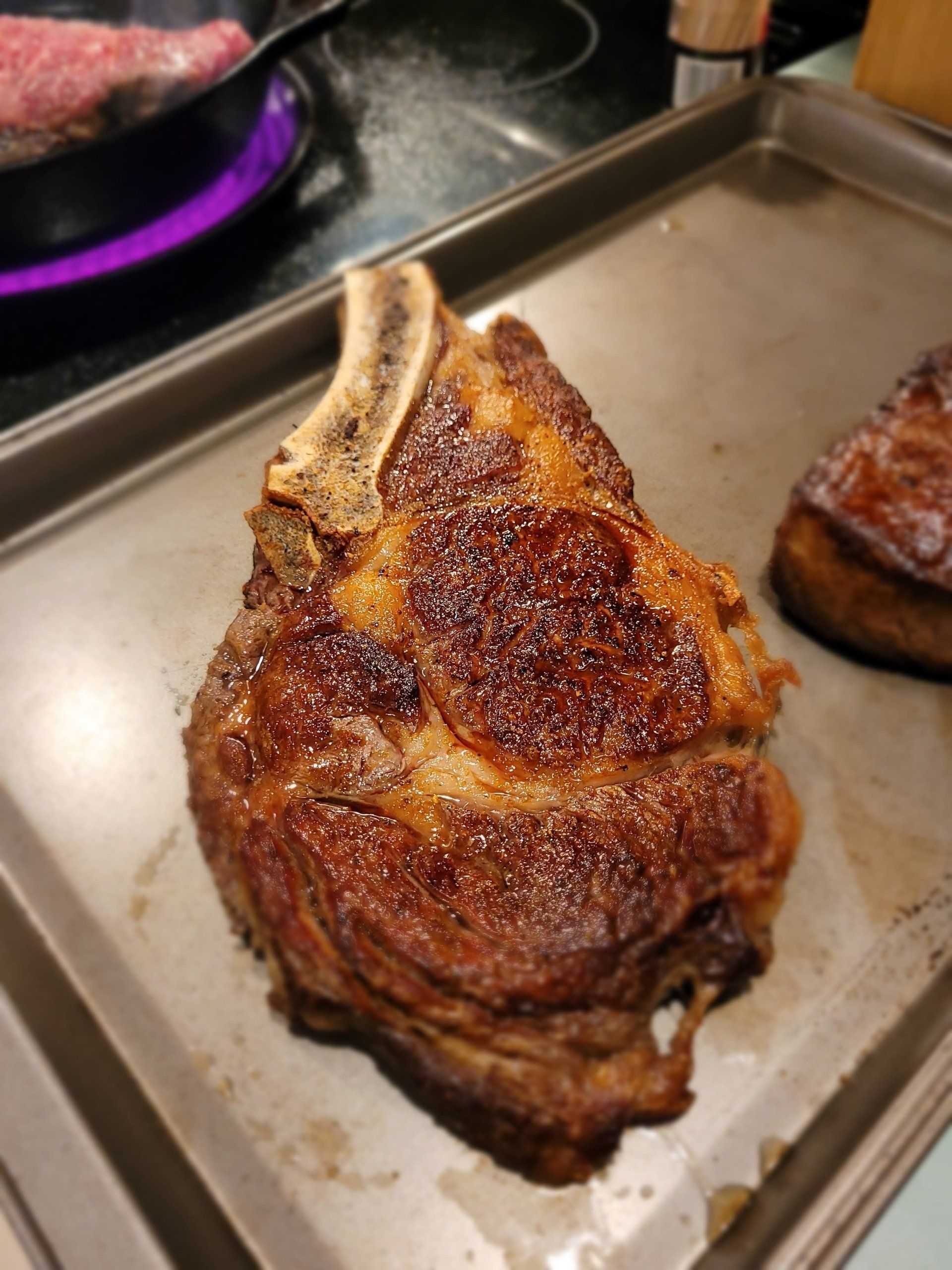
BONE IN RIBEYE
The Ribeye comes from the rib of the cow, and since the rib cage is used very little for movement and doesn't bear much weight, the ribeye is well marbled and tender with a layer of fat surrounding the cut. When this fat melts during cooking, the flavor is spread throughout the meat, bringing amazing flavor to every bite. Wagyu Ribeyes tend to be intensely marbled, epitomizing the desired traits!
Ribeyes can be served with the bone removed, or left in (which adds even more flavor), depending on the butcher or consumer's preference. To cook, it's best to first sear on high heat to seal in the juices, then finish on low heat either in the oven, on the stove or the grill.
New York Strip Steak
The Strip Steak comes from the short loin and is one of the most popular cuts in the country. The strip is actually part of the T-Bone, or Porterhouse Steak, both of which include the strip and tenderloin on either side of the bone, but if you ask me, you can never get the doneness correct for both pieces, so best to cut the bone out and eat them both separately!
On the spectrum of fat content, Strip Steaks are intermediate, falling between the tenderloin and a ribeye for a balanced experience of flavor and texture. In Wagyu, the Strip can house some of the most dense and delicate veins of marbling, exaggerating the already prevalent qualities and making it one of the best cuts of Wagyu beef, and I will tell you, as someone who would never typically choose a strip, it was easily my favorite single cut of our beef.
To cook, keep it simple. You can trim some excess edge fat to reduce flair ups, cook quickly over high heat on the grill, or broil or pan-fry
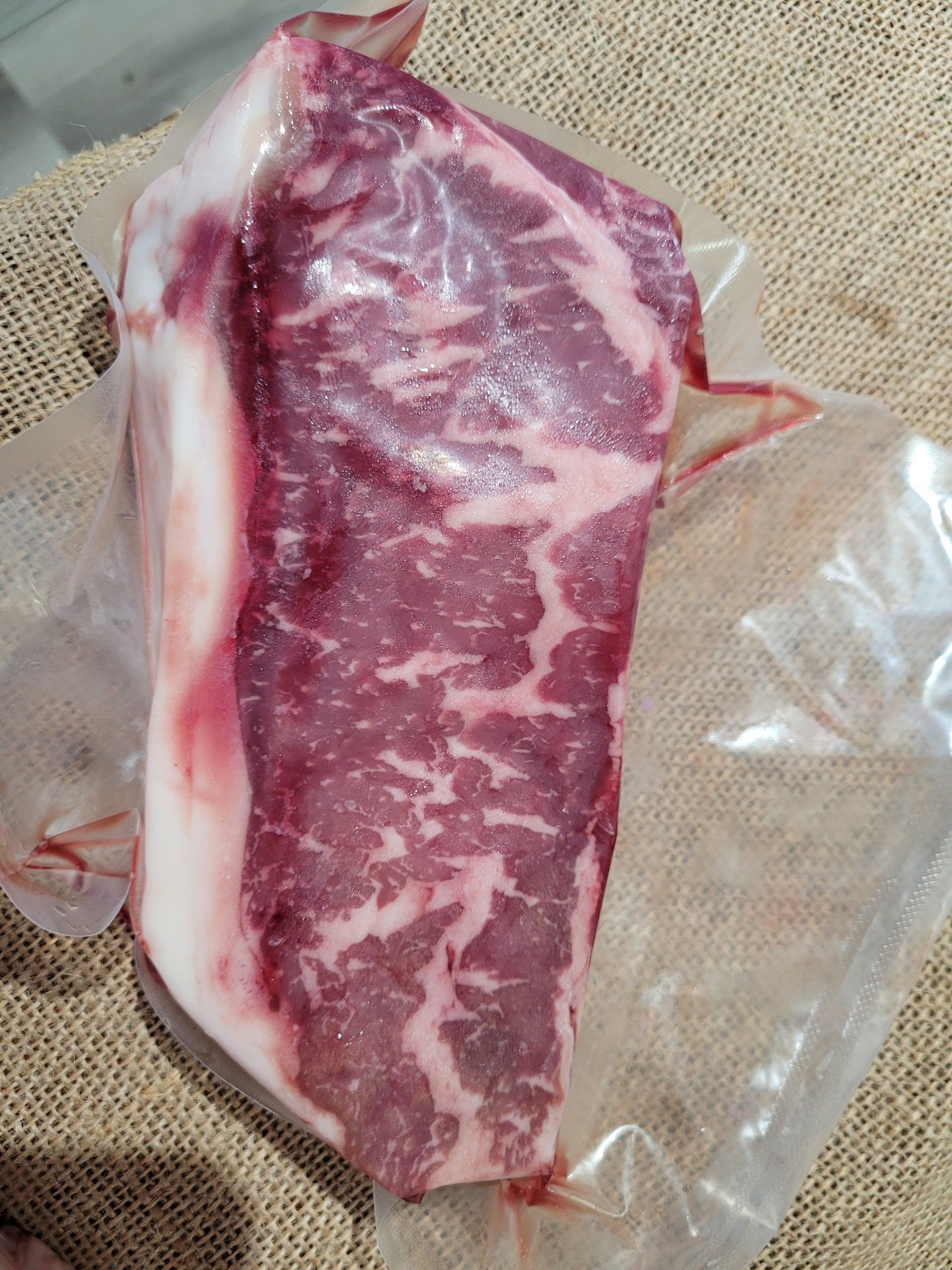

Sirloin
Located at the back end of the cow, the sirloin is divided into the Top Sirloin and Bottom Sirloin. The top is considered a leaner cut that offers good flavor and moderate tenderness. Top Sirloin doesn't exhibit the premium attributes of Wagyu such as intense marbling as some others, but it is still a delicious cut of meat that makes a terrific entree, cooks nicely with marinades and brings big flavor to recipes. It is a popular choice because it's more affordable than filet yet still delicious and can be cooked by frying, grilling, broiling or roasting.
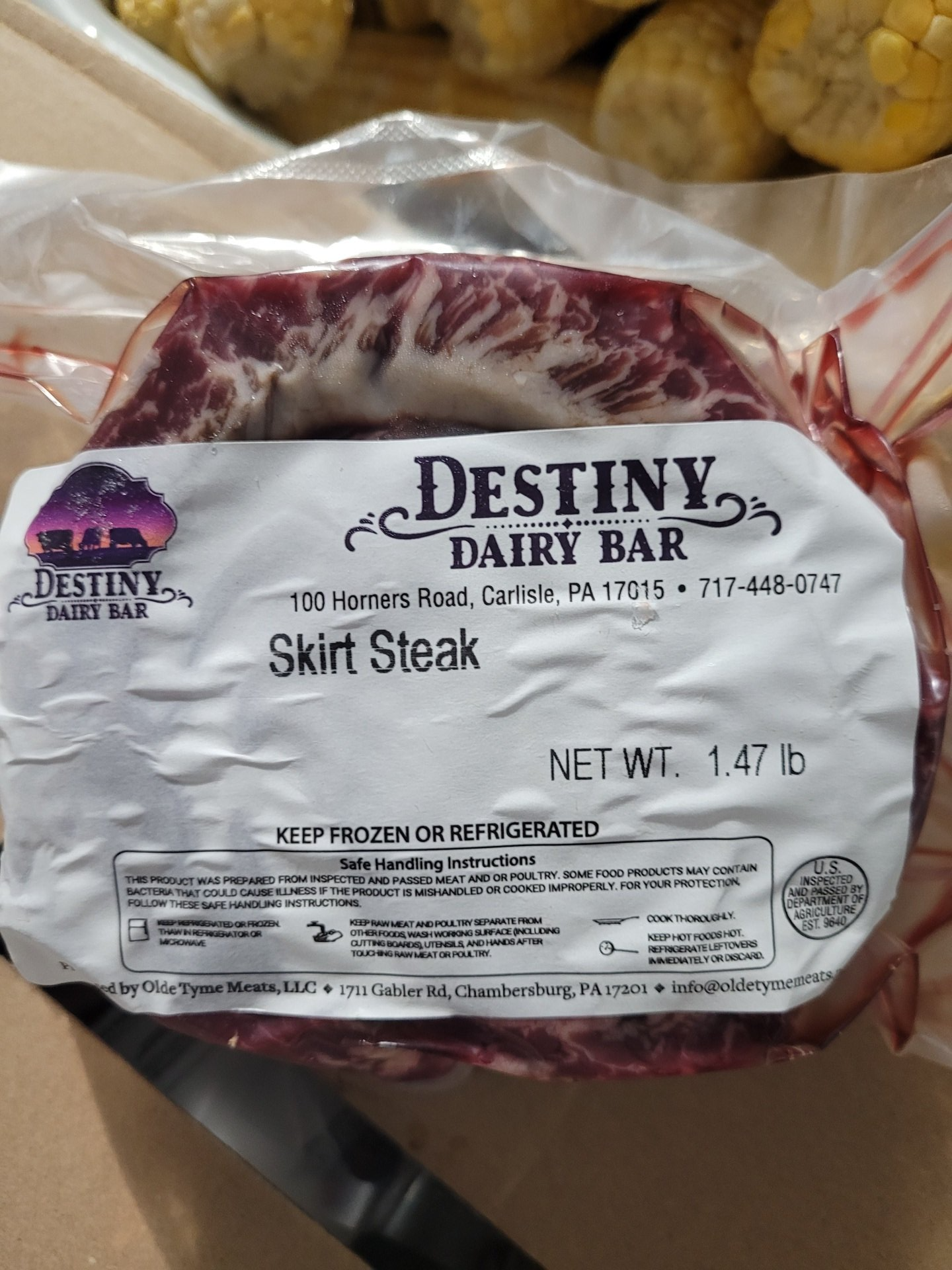
Skirt Steak
This cut is located just underneath the rib, towards the belly and part of the diaphragm, it is boneless and has a great flavor. When prepared properly, the delightfully marbled Wagyu skirt can have a soft, delicious texture. It is the primary ingredient for carne asada, and is great when marinated and grilled, roasted or sauteed in many Asian or Mexican recipes. Try marinating in vinegar, Worcestershire or soy sauce and cook on high heat for a short amount of time to break down the long muscle fibers. You can also cut it against the grain to preserve the juices and make it more tender. Our skirt is long and varies in thickness from the ends to the thicker middle offering both medium rare and carmelized crisp when prepared together.
Flat Iron

The Flat Iron steak is one of the most tender parts of the cow, despite being sliced from the tougher shoulder section (also known as the top chuck or top blade). It's well-marbled, leading to intense flavor, especially in Wagyu cattle. Try it with your favorite rub or marinade, grilled, broiled and serve whole or slice it thin for a great fajita or sandwich.
The Flat Iron has proved to be my favorite cut!!! These steaks, seared in cast iron on medium low heat with a little salt and pepper are tender and have amazing flavor.
Denver steak
Denver steak is cut from the under blade of the chuck roll (so someone basically found the very best part of the shoulder). It is tender and flavorful with the umami taste Wagyu beef is known for. Also known as the Zabuton Steak, it has deep marbling and very uniform thickness, so use a reverse sear.
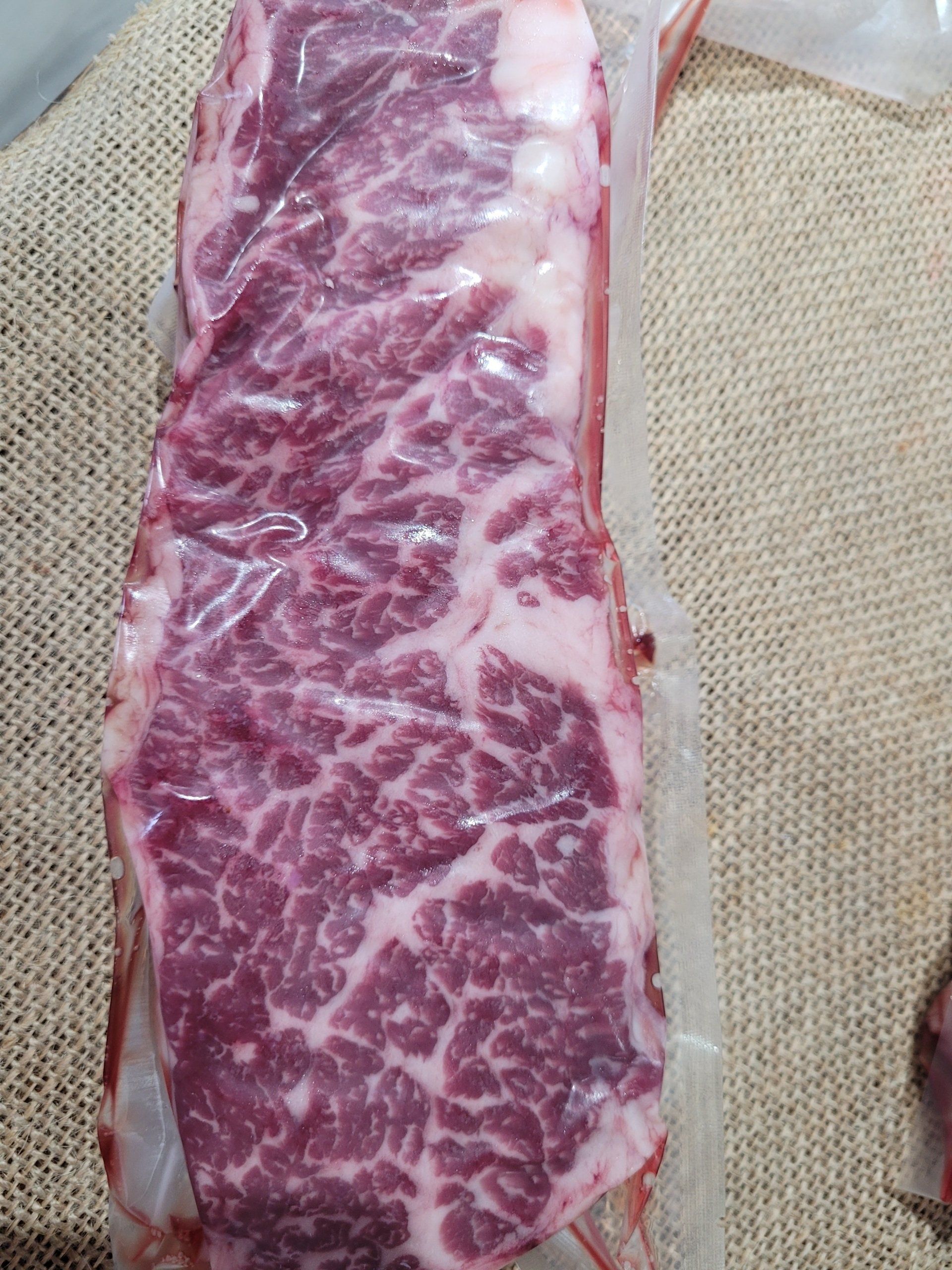
RANCH STEAK
The Ranch Steak comes from the chuck primal, the section of the cow closest to the head. Do not overcook (more than medium with dry heat) or it will be too tough. Instead, try braising, or marinade and grill, broil or fry this small steak and it will be a lovely meal!
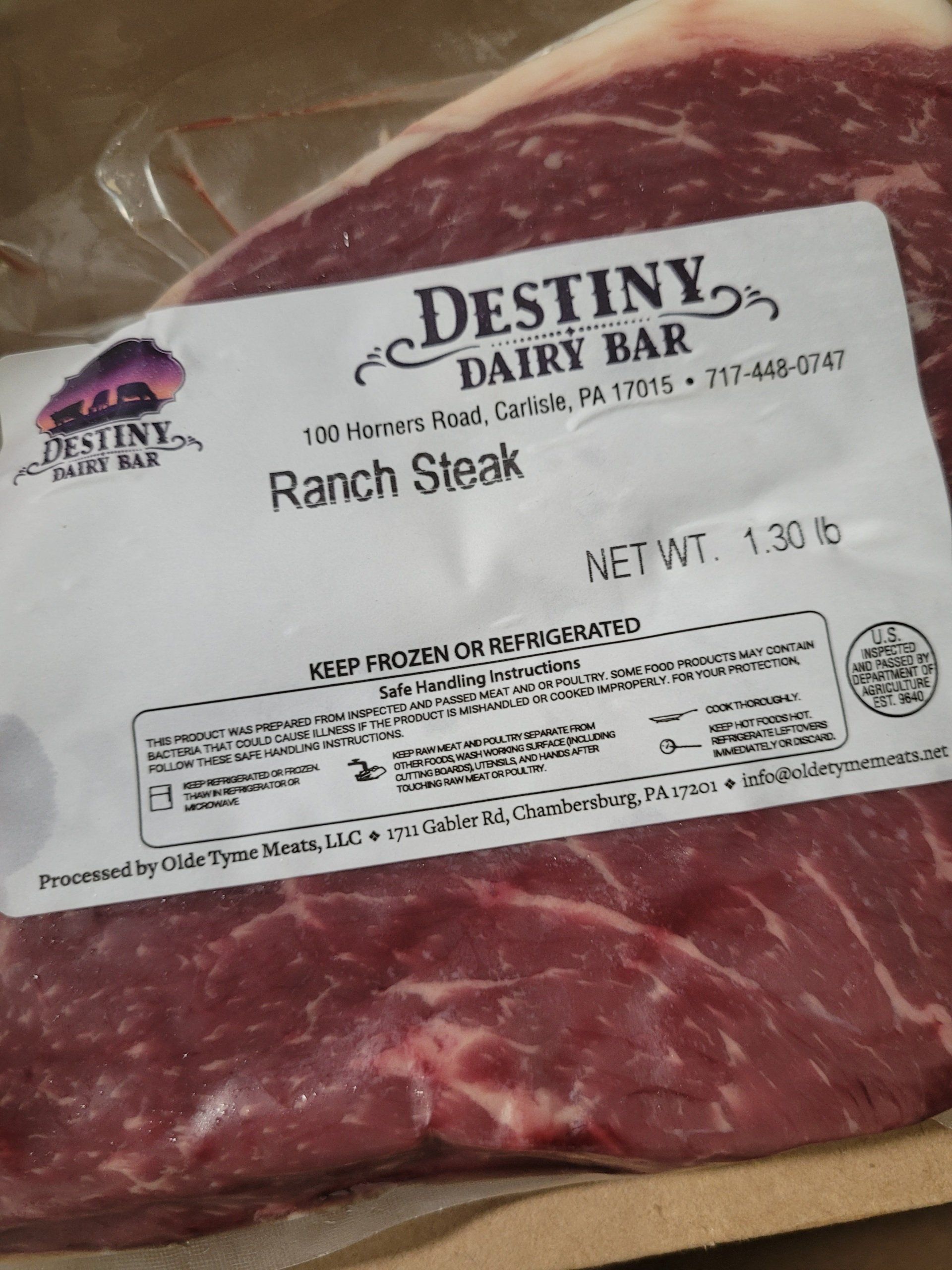
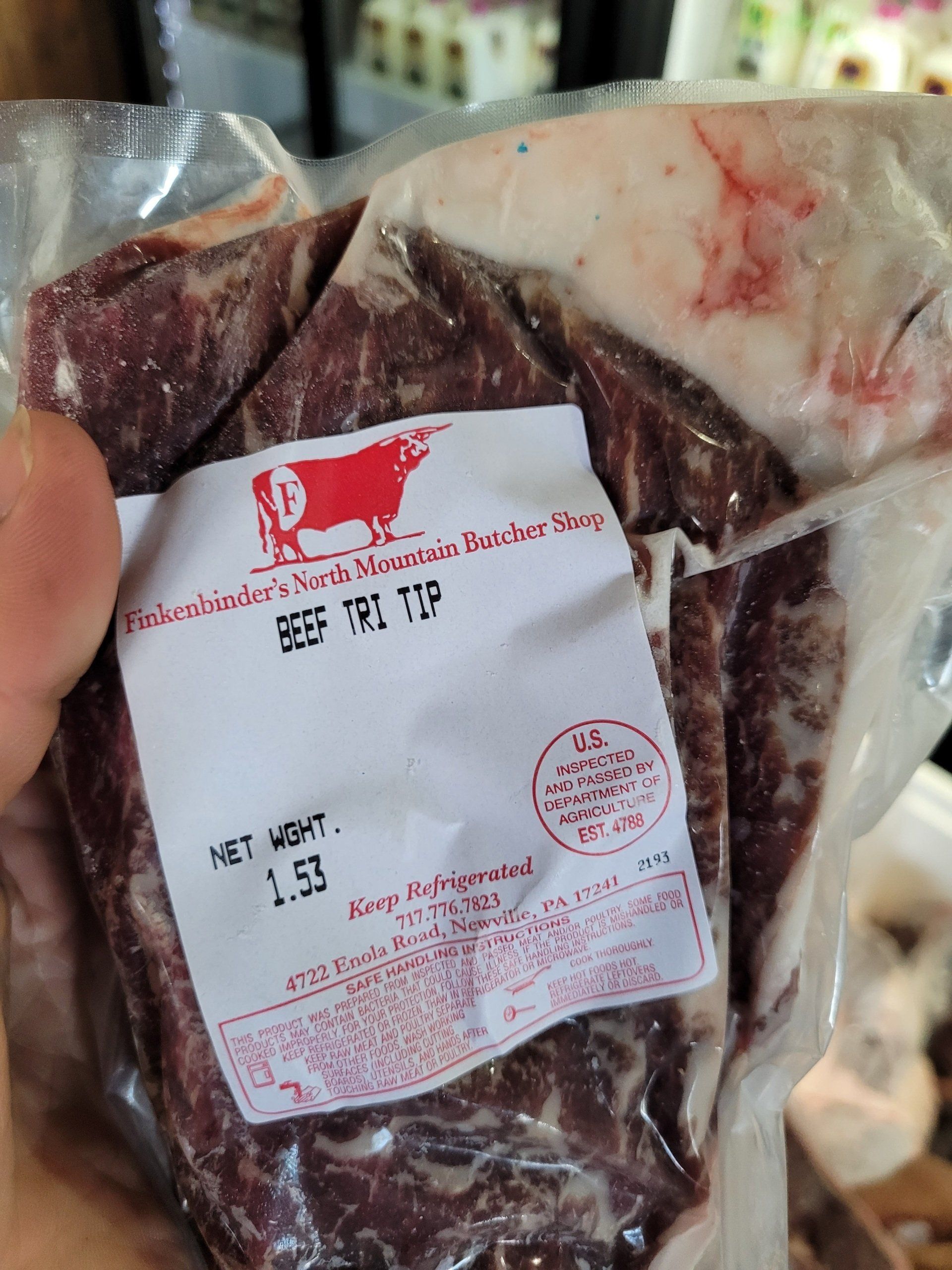
Tri-Tip
This cut is very thick and comes from below the sirloin. It is an underrated cut known for its incredible marbling and softness.
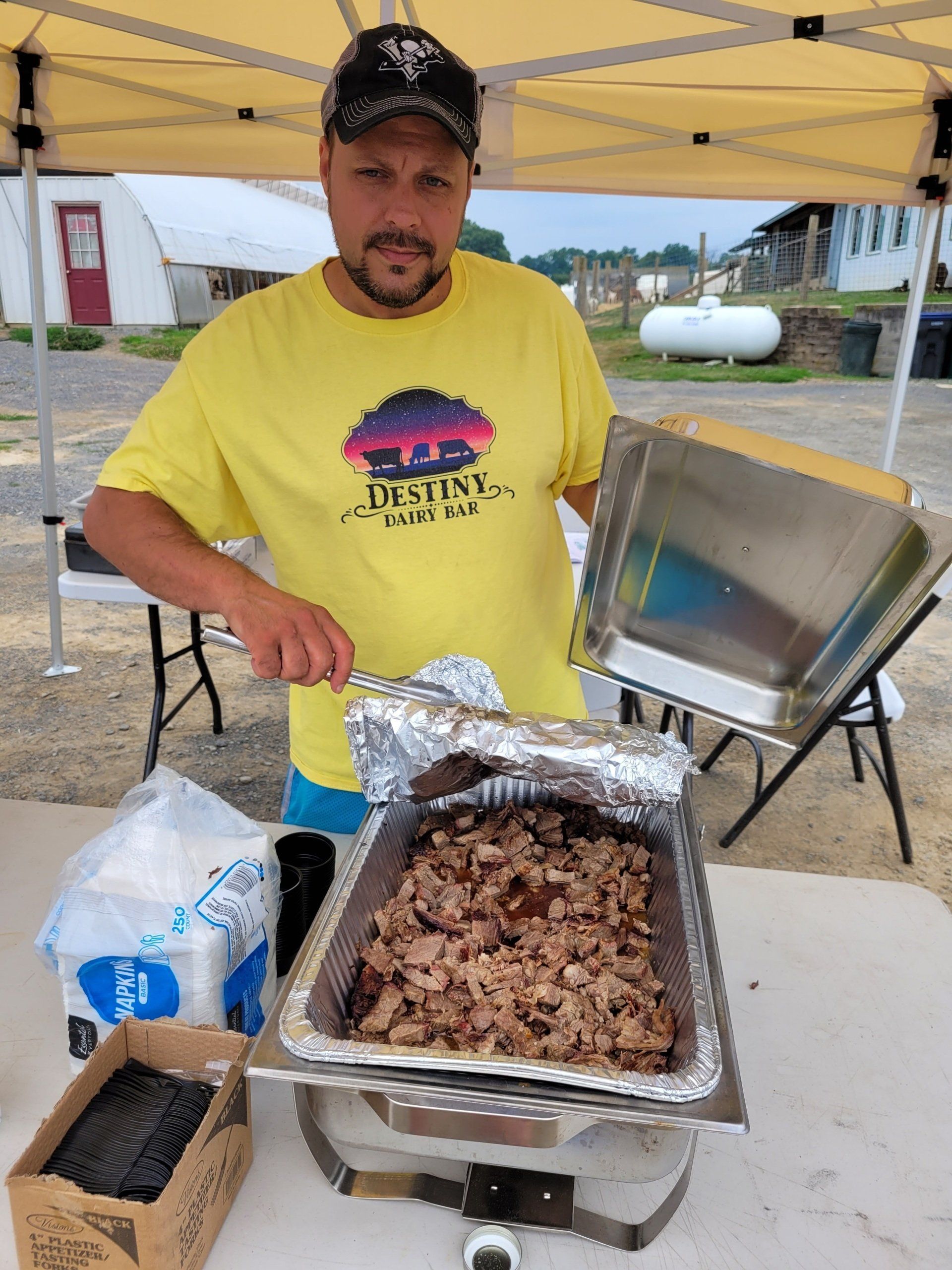
Brisket
The Brisket is ideal for BBQ enthusiasts with a consistent fat cap to protect the meat and flavor during cooking. Ours is cut into pieces, the flat and the point, approximately 4 to 5 pounds each and is excellent for smoking and roasting. Also now available are whole sides, between 9 and 11 lbs each.

Chuck Roast
The original comfort beef, this cut is typically one of the cheapest cuts of meat, used for pot roasts that produce delicious flavors and aromas. The Wagyu Chuck Roast is a versatile cut that can be cooked many ways, including cutting it into steaks to cook on the grill, cooking it in the oven, or mixing it with delicious vegetables in a roast.
Try cooking a CHUCK EYE STEAK in a cast-iron skillet and you may just have the best tasting meat ever!
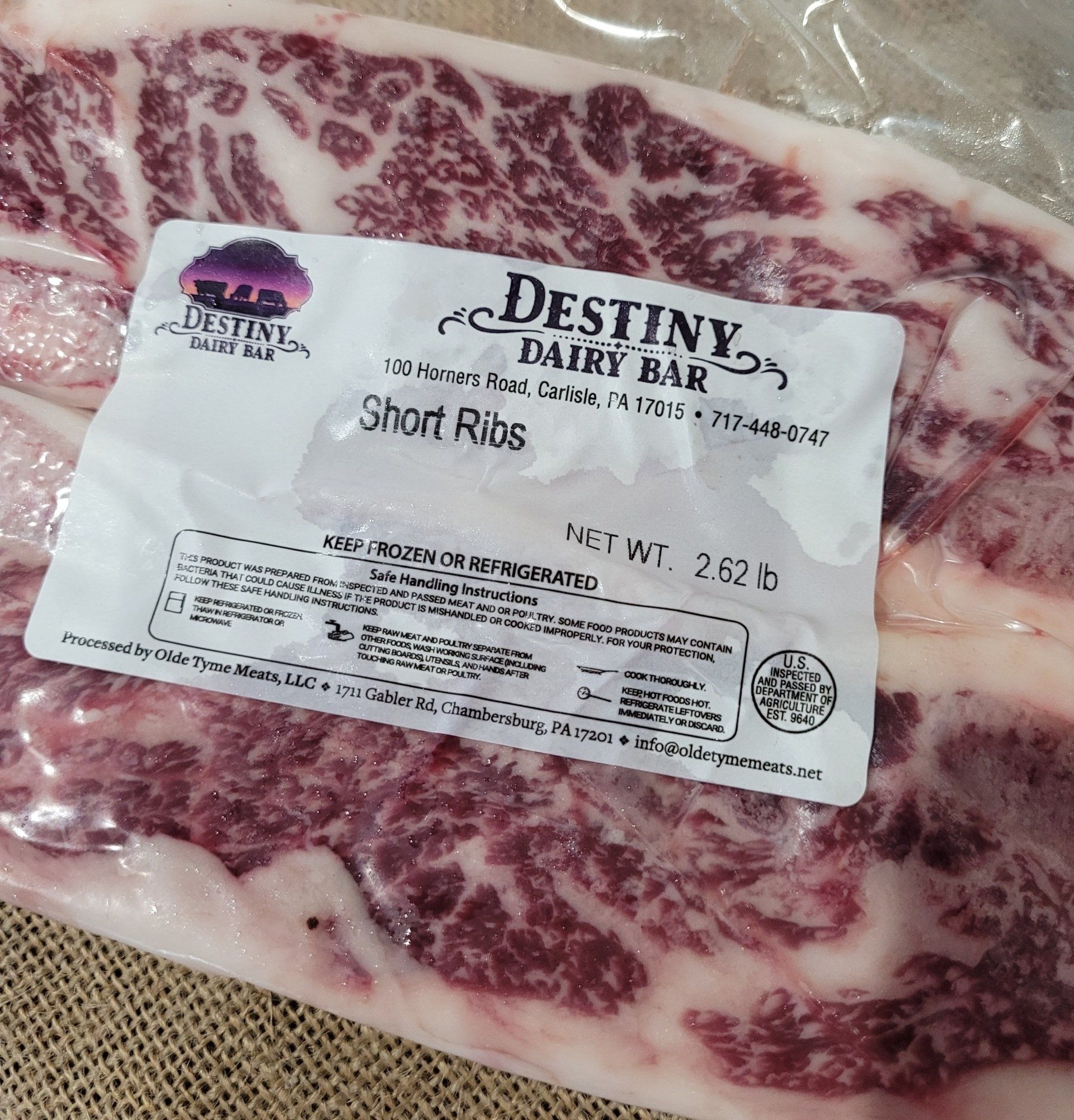
Short Ribs
Short ribs are from the first 5 rib bones in the beef chuck (shoulder) which are actually shorter than the remaining 8 ribs used for steaks and roasts. They are larger and meatier than the pork counterparts. They are highly marbled, meaty and delicious!
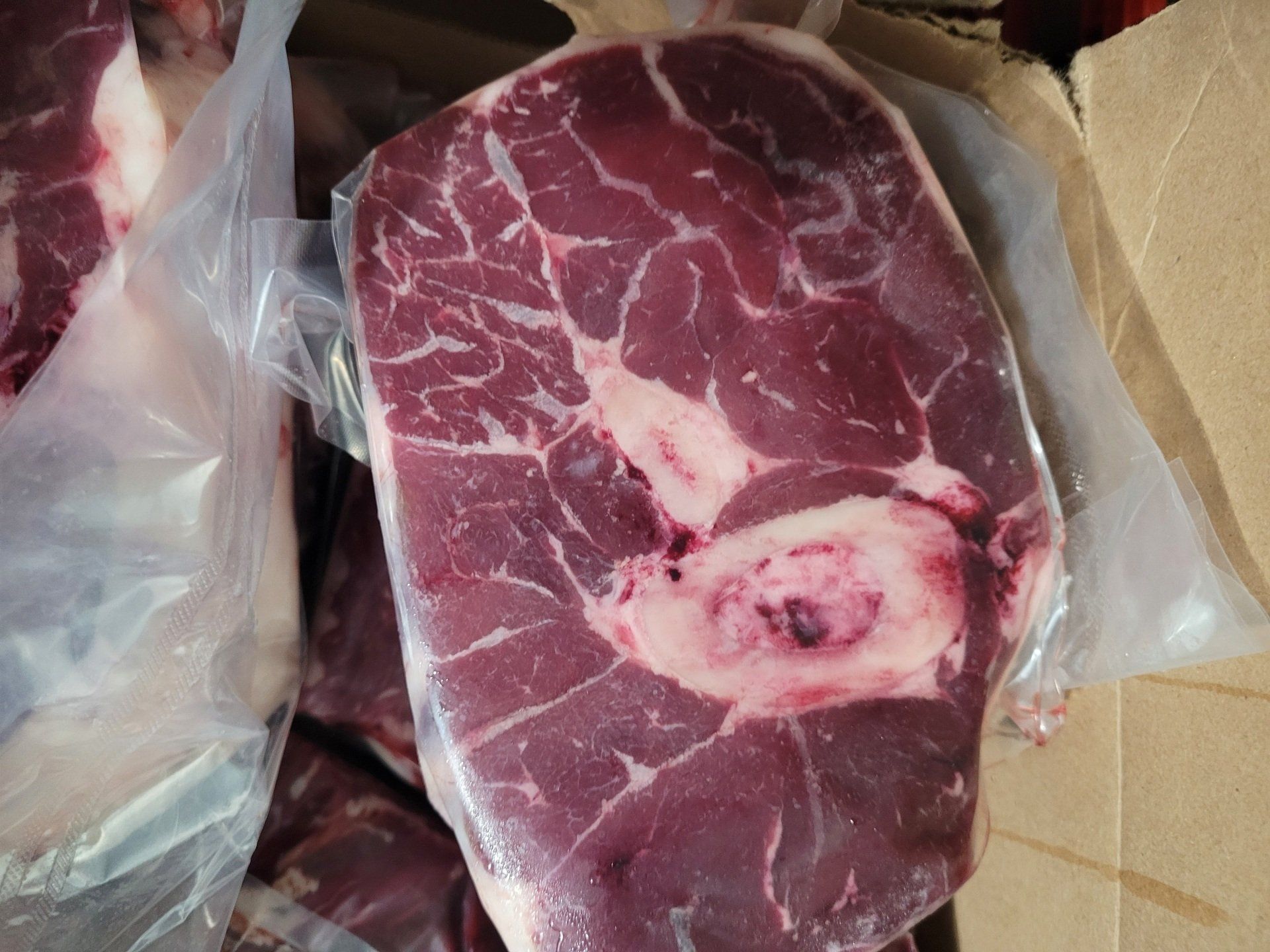
Osso Buco
Osso Buco translates to "bone with a hole." The steak is one of the hardest working muscles in a steer, but the beef is wrapped around a bone that is full of marrow. Cooking it low and slow, to an internal temperature of 180 degrees will lead to fall off the bone perfection, and amazing flavor!!

Chipped steak and Kabob/Stew Meat
Always options, chip steak is perfect for sandwiches, it cooks up quickly and can replace ground beef or chicken in many dinners for flavorful textured additions!
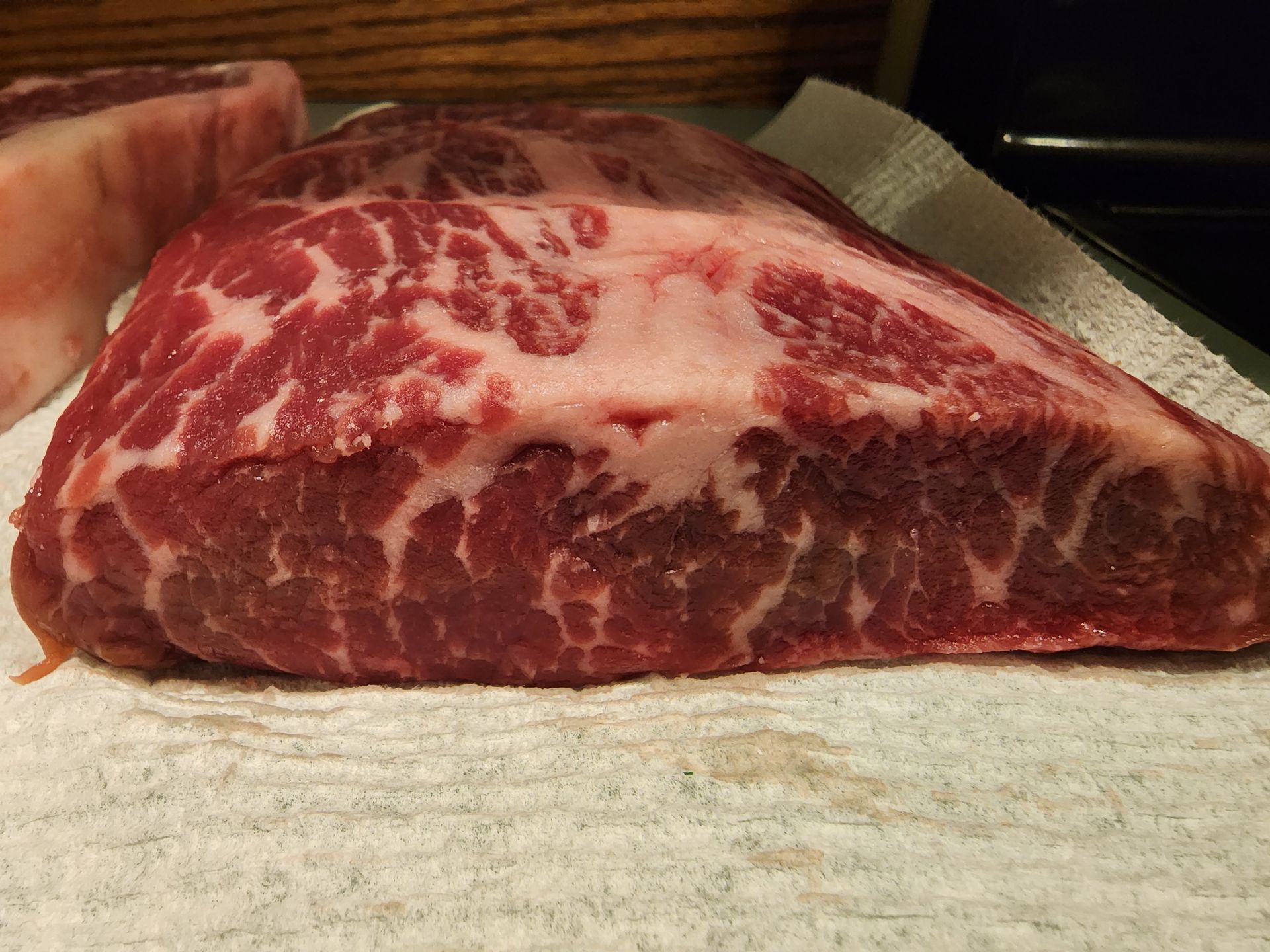
Flat Iron
Cross section of a flat iron
Button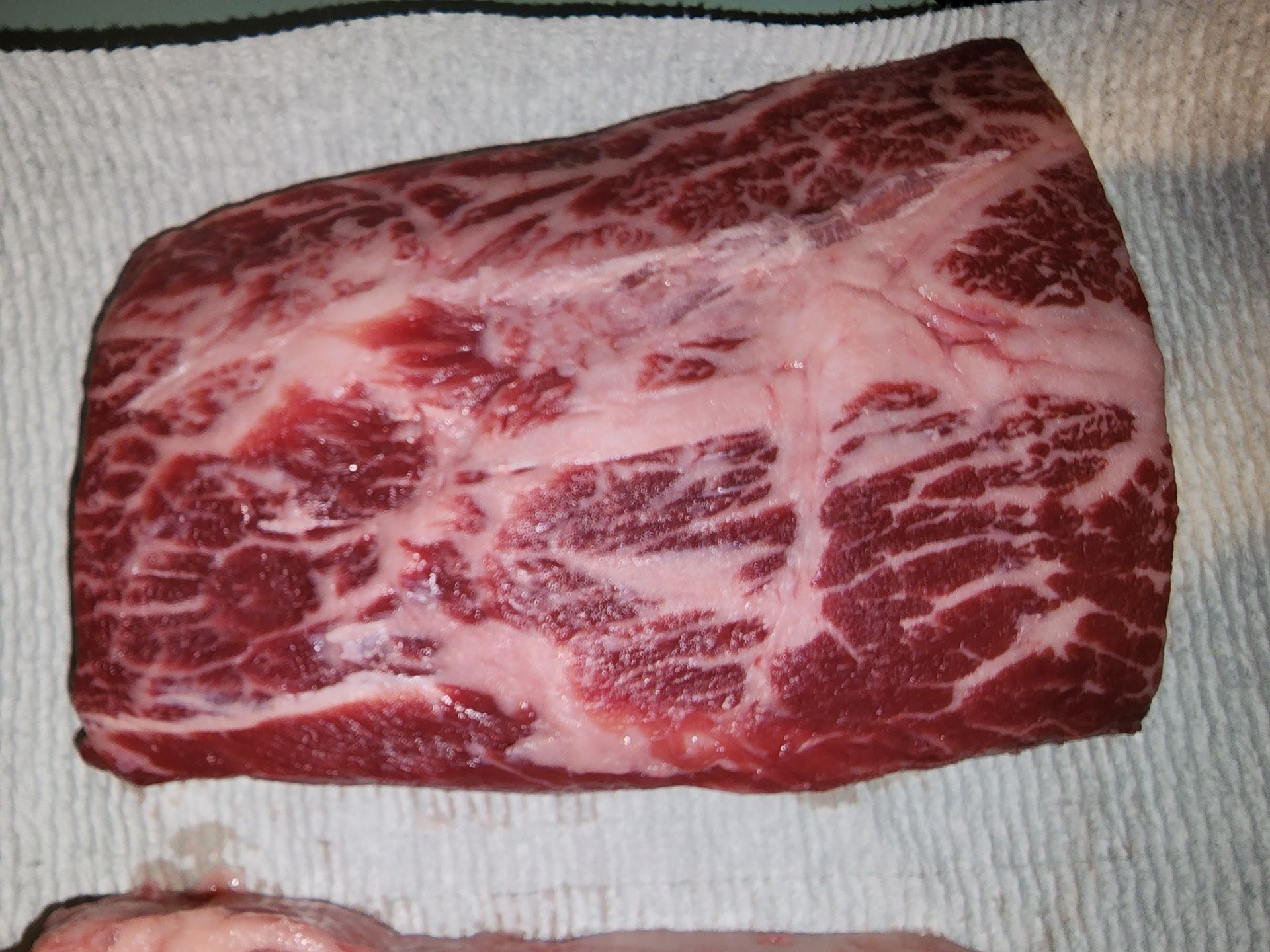
Flat Iron
Button
Slide title
Write your caption hereButton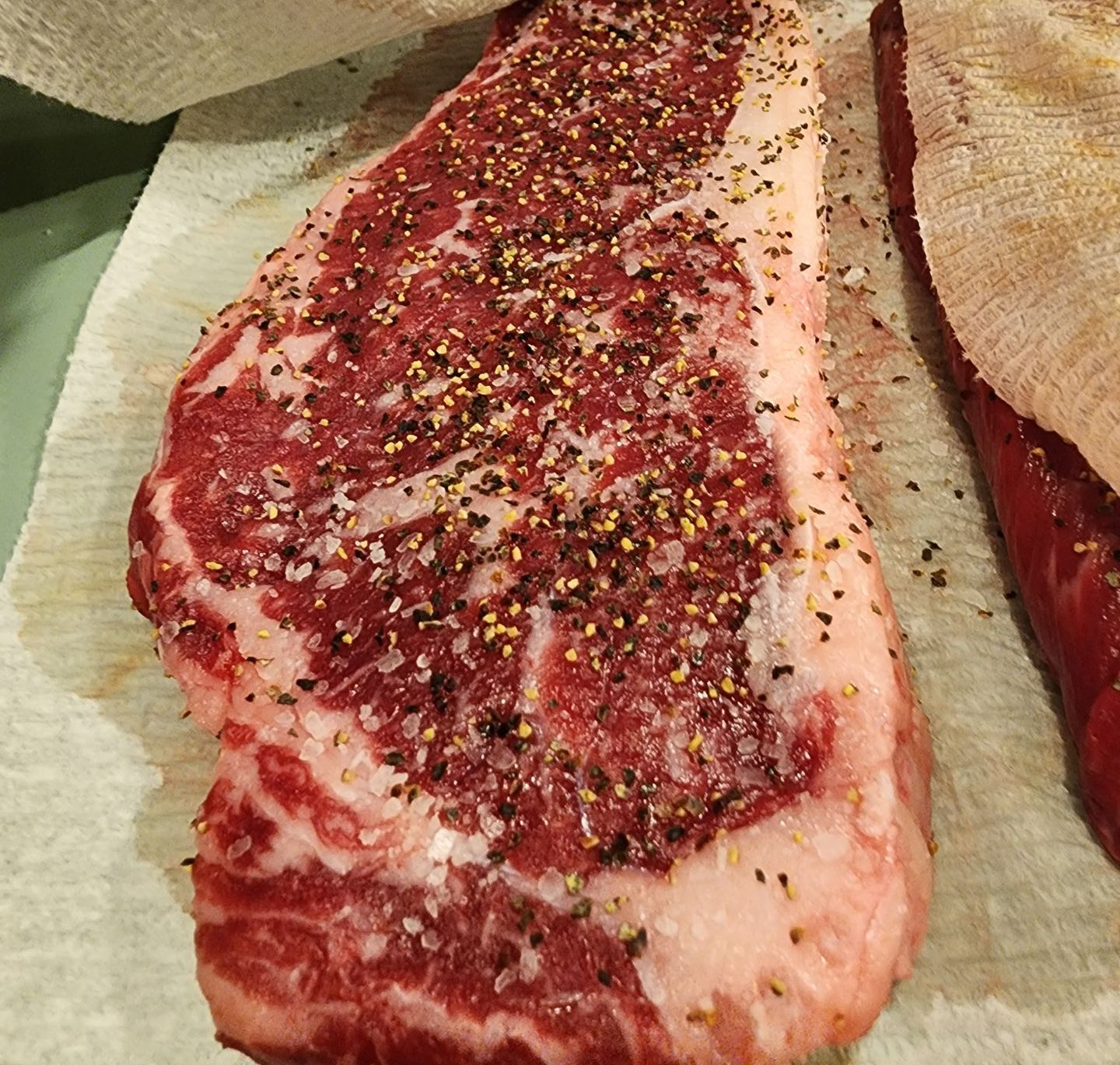
Slide title
Write your caption hereButton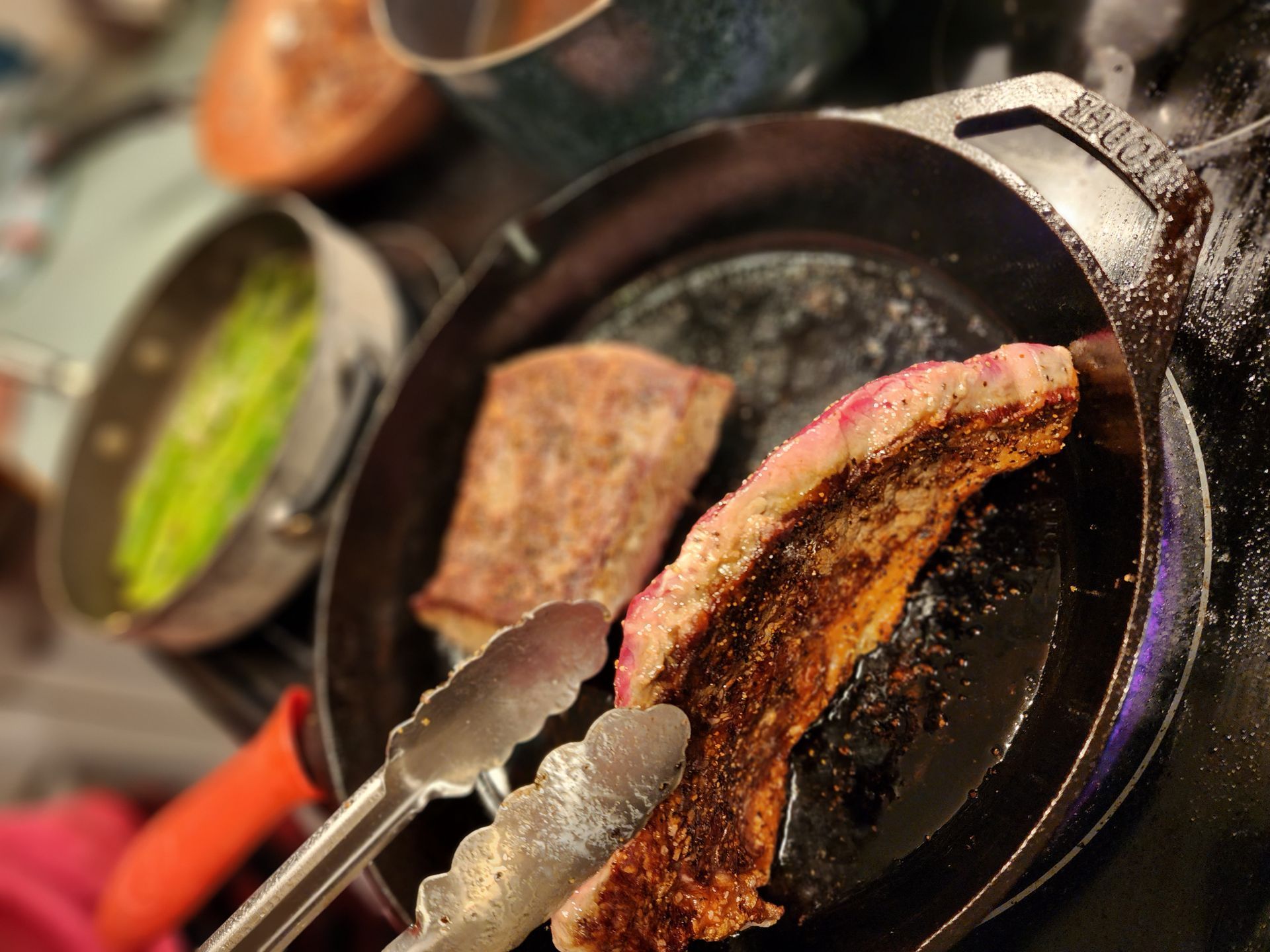
Slide title
Write your caption hereButton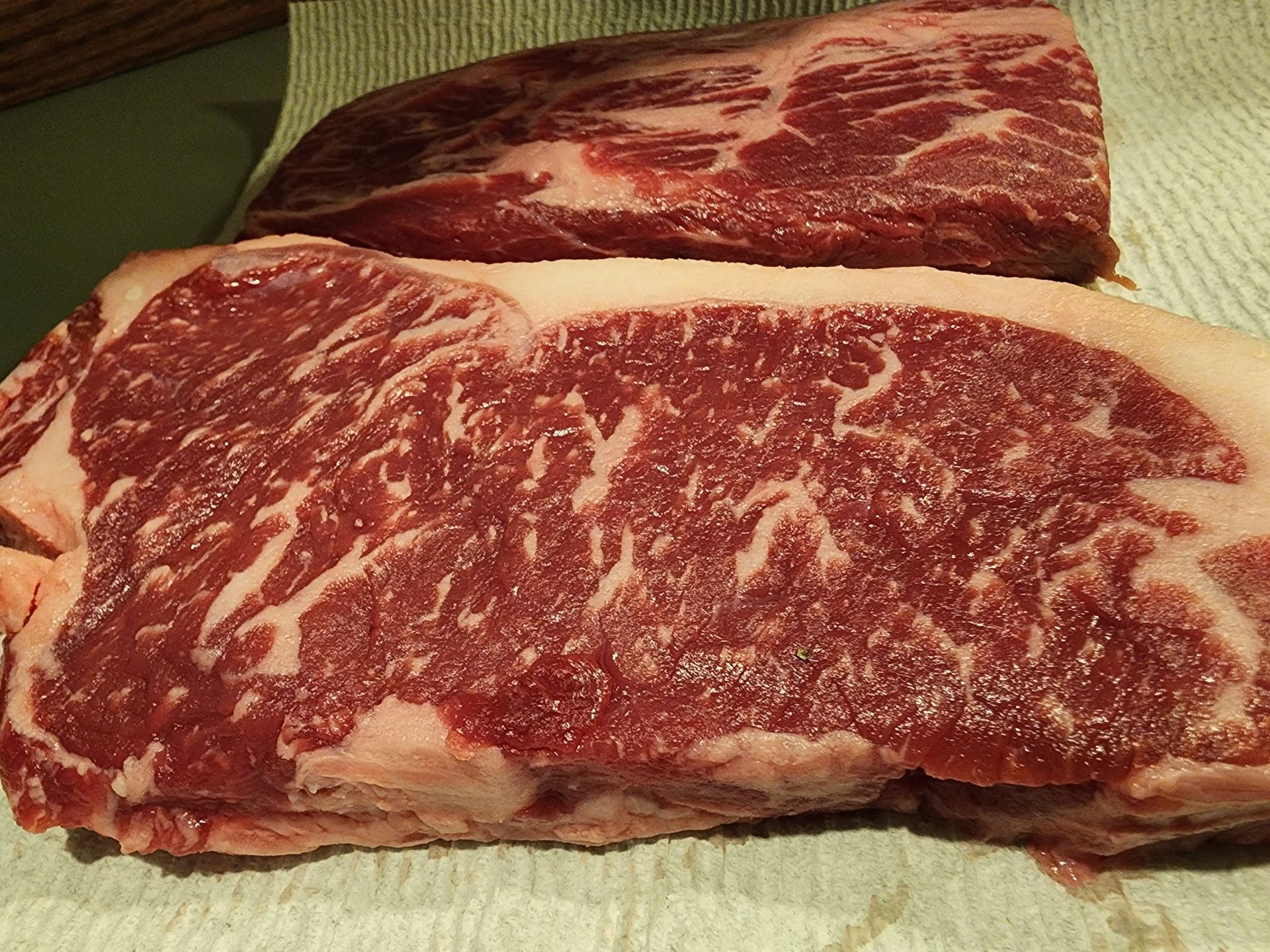
New York Strip
Write your caption hereButton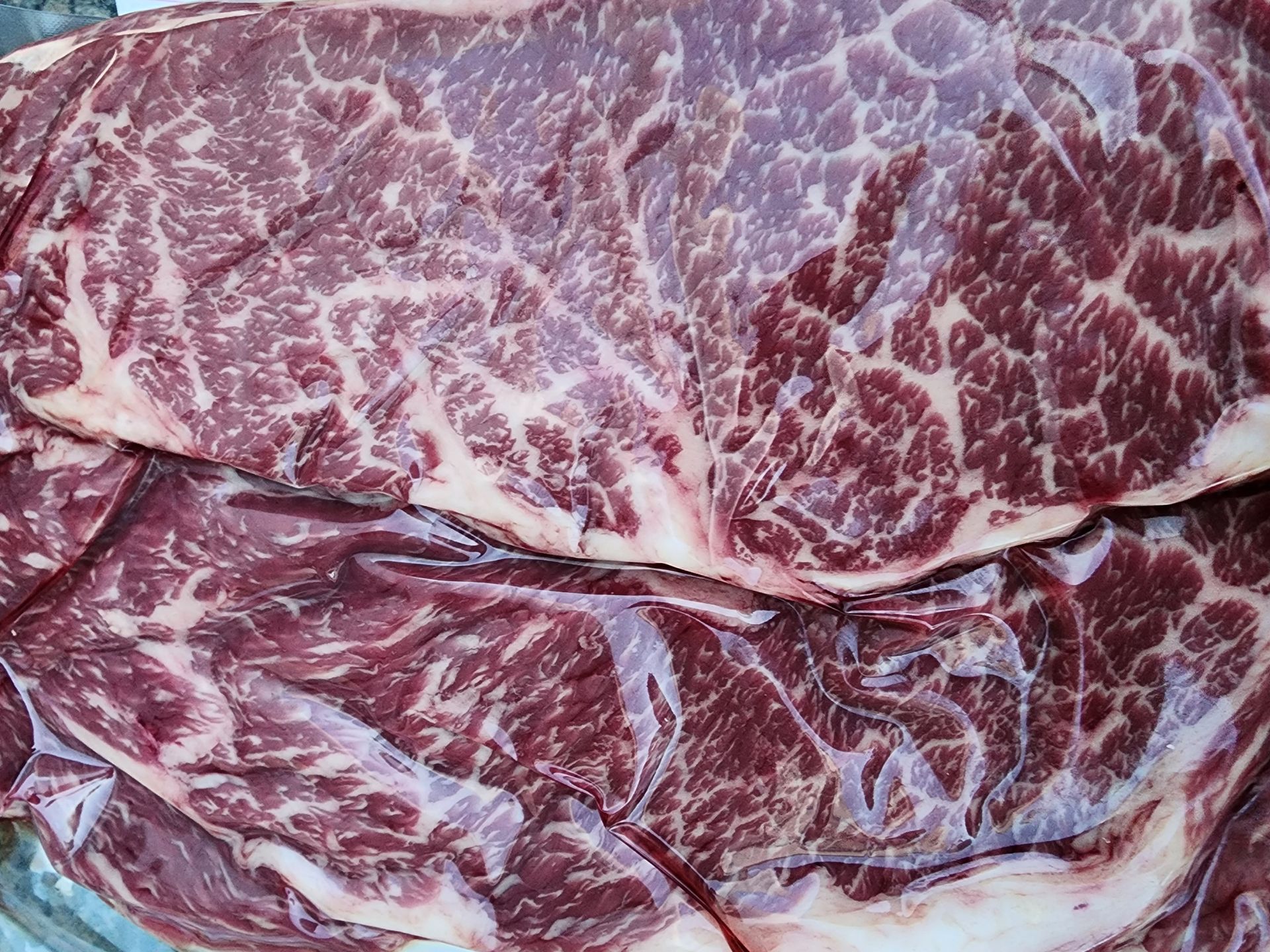
Frozen Denver Steak
Latest Denver Steaks come 2 to a pack
Button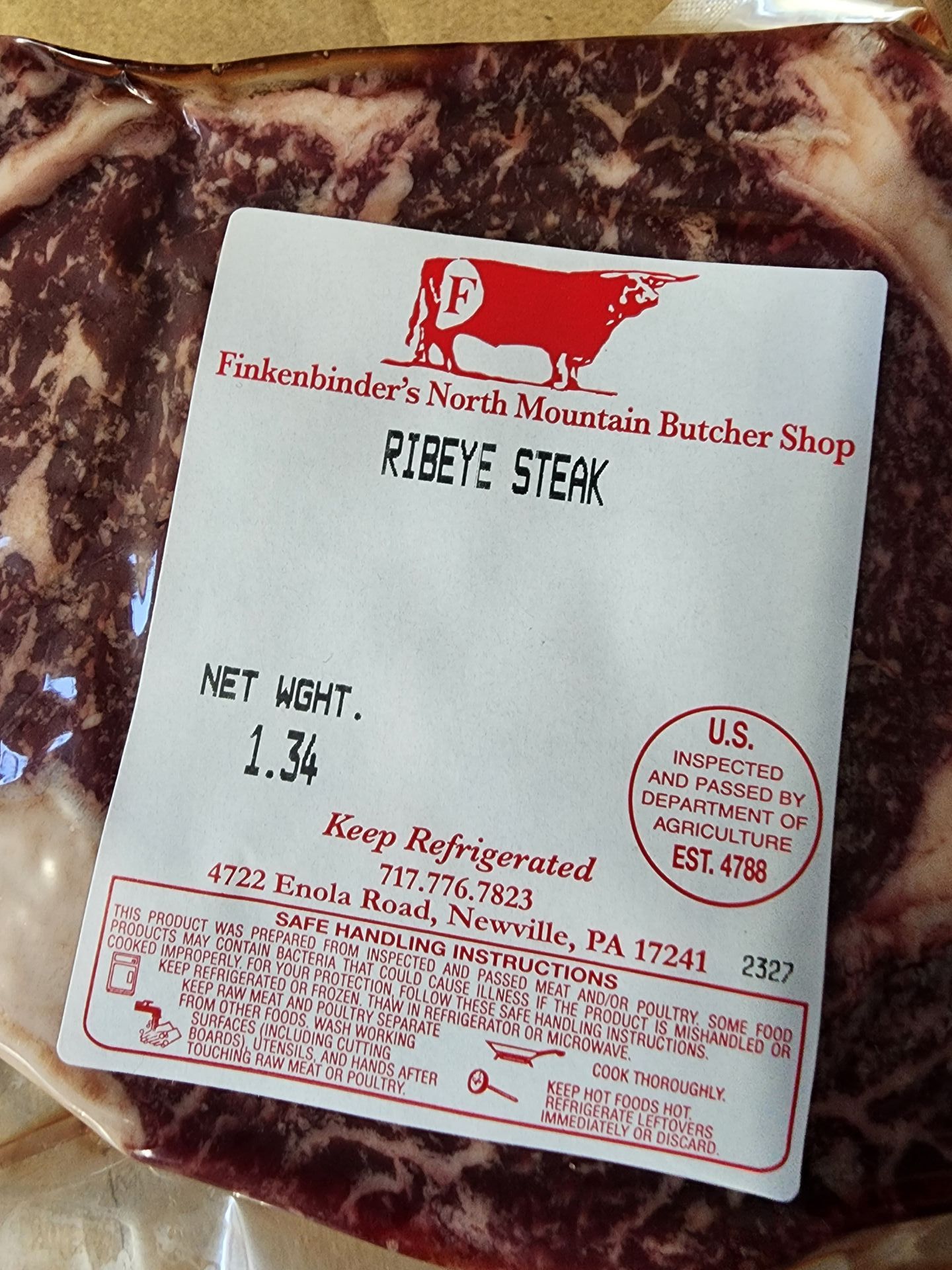
Ribeyes
Ribeyes from steers harvested over 30 months must have bone removed
Button
Bottom Round Roast
Write your caption hereButton
Slide title
Write your caption hereButton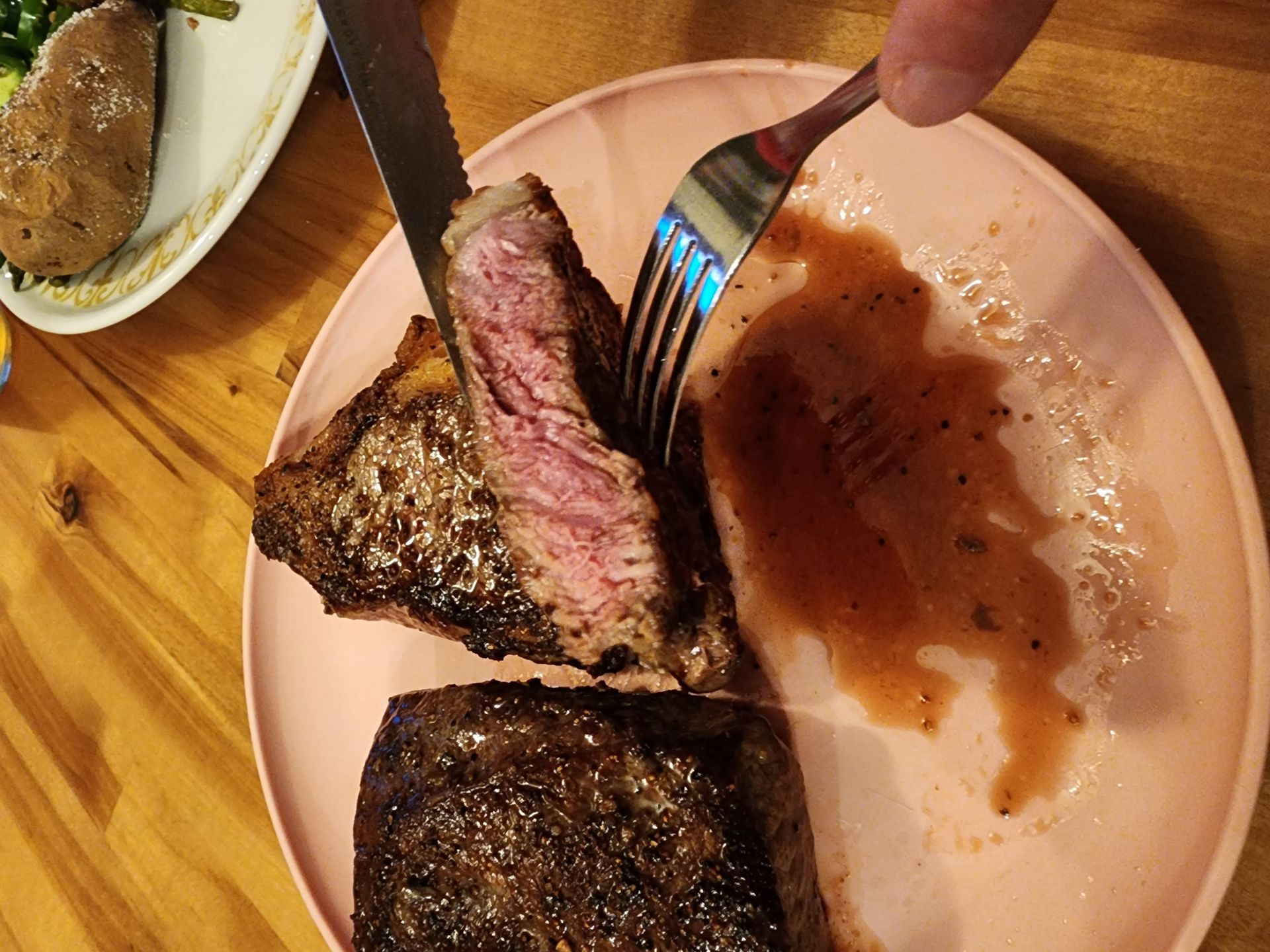
New York Strip
Write your caption hereButton
Slide title
Write your caption hereButton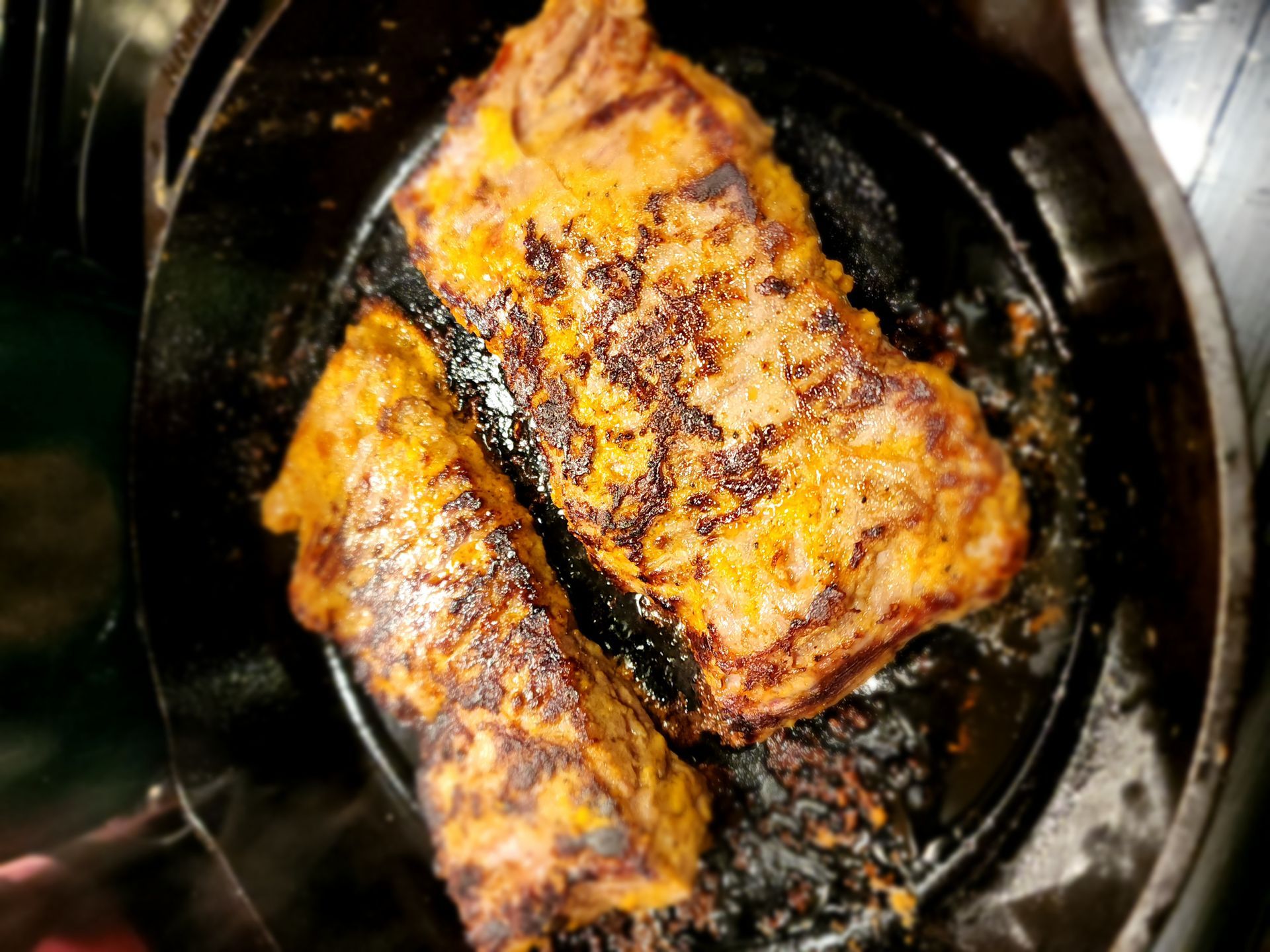
Skirt Steak Marinated
Write your caption hereButton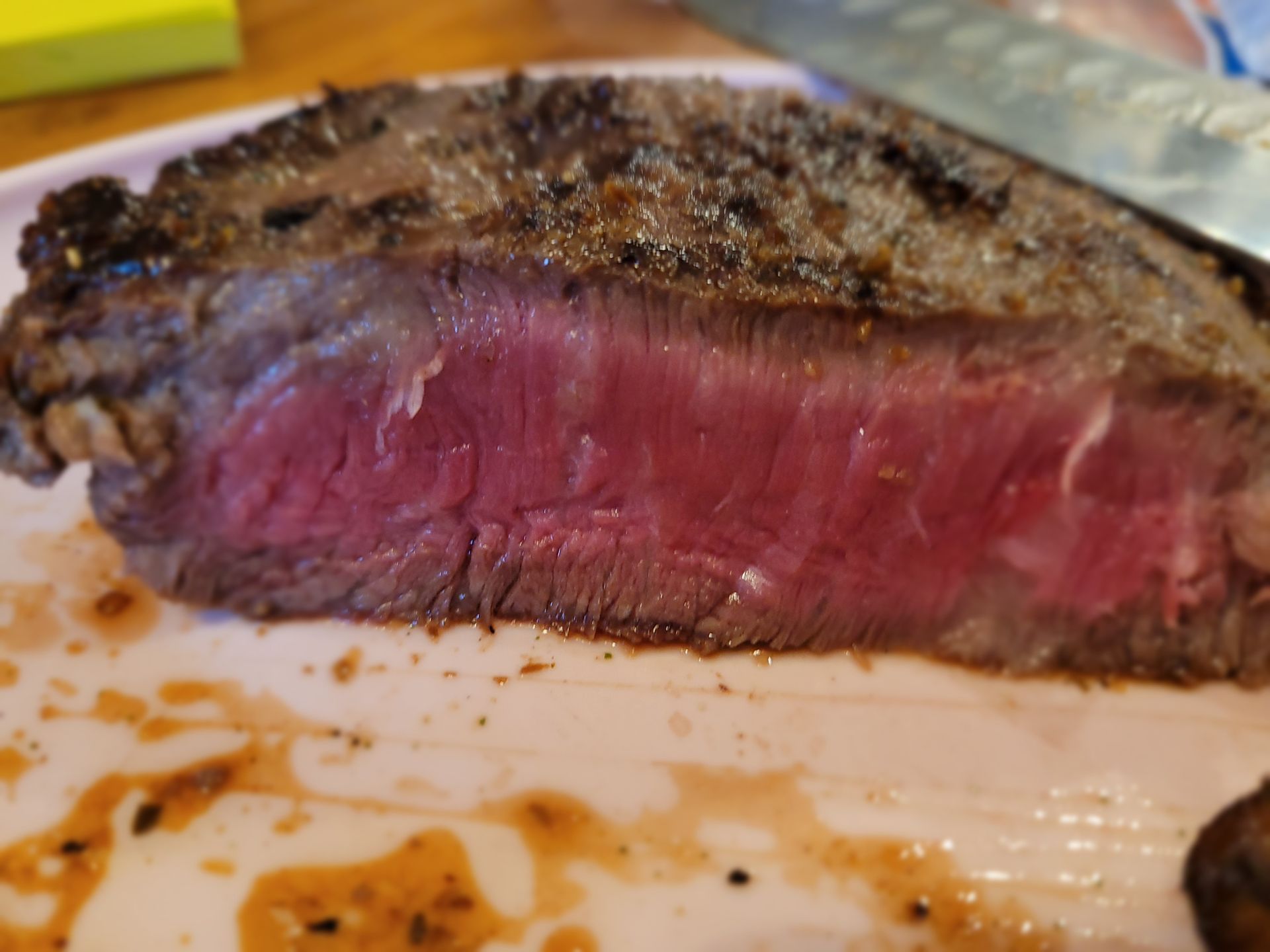
Flat Iron
Write your caption hereButton
Ribeyes and Strip on the Cast Iron Skillet
Write your caption hereButton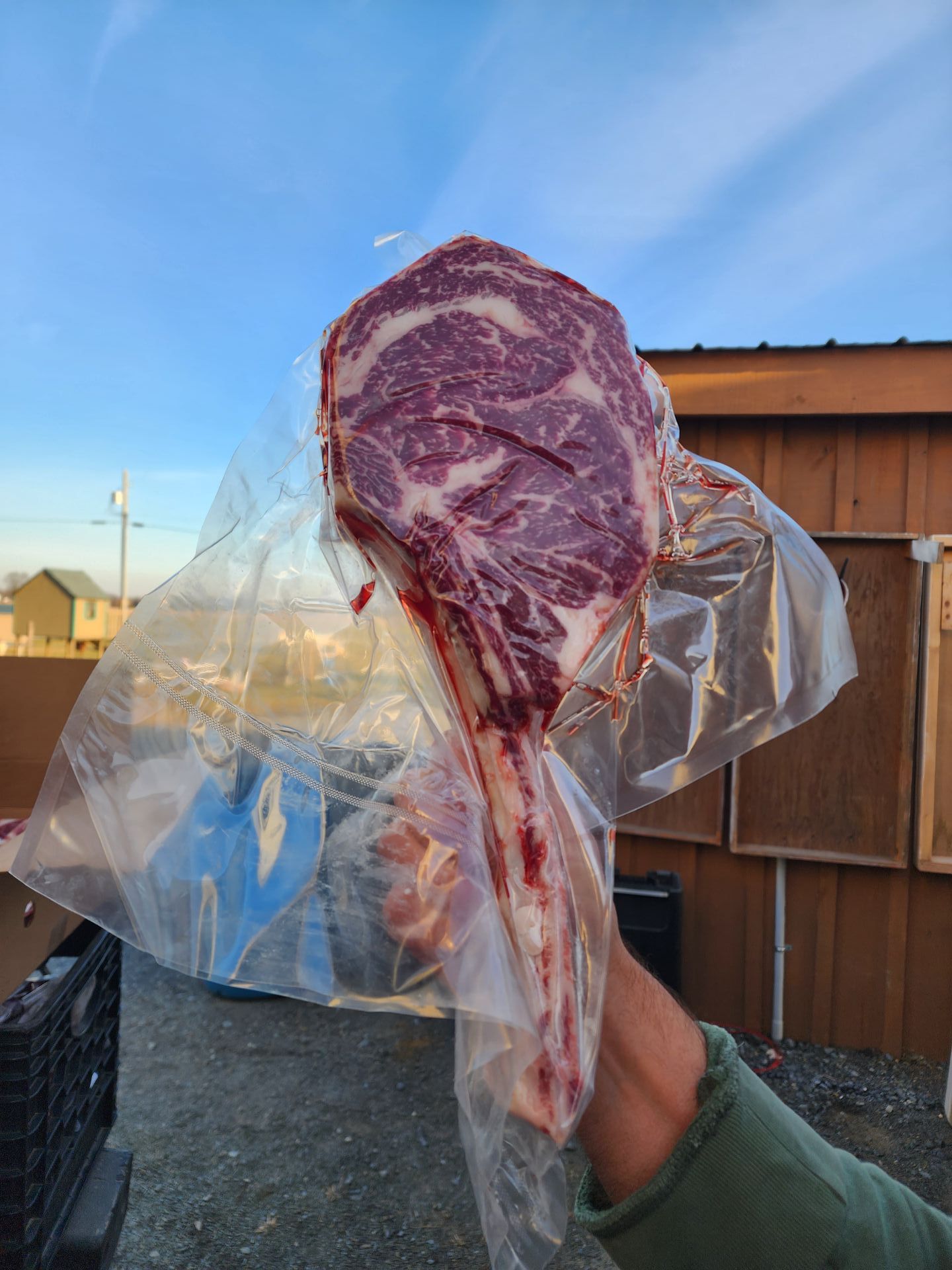
Tomahawks offer delightful dining
Write your caption hereButton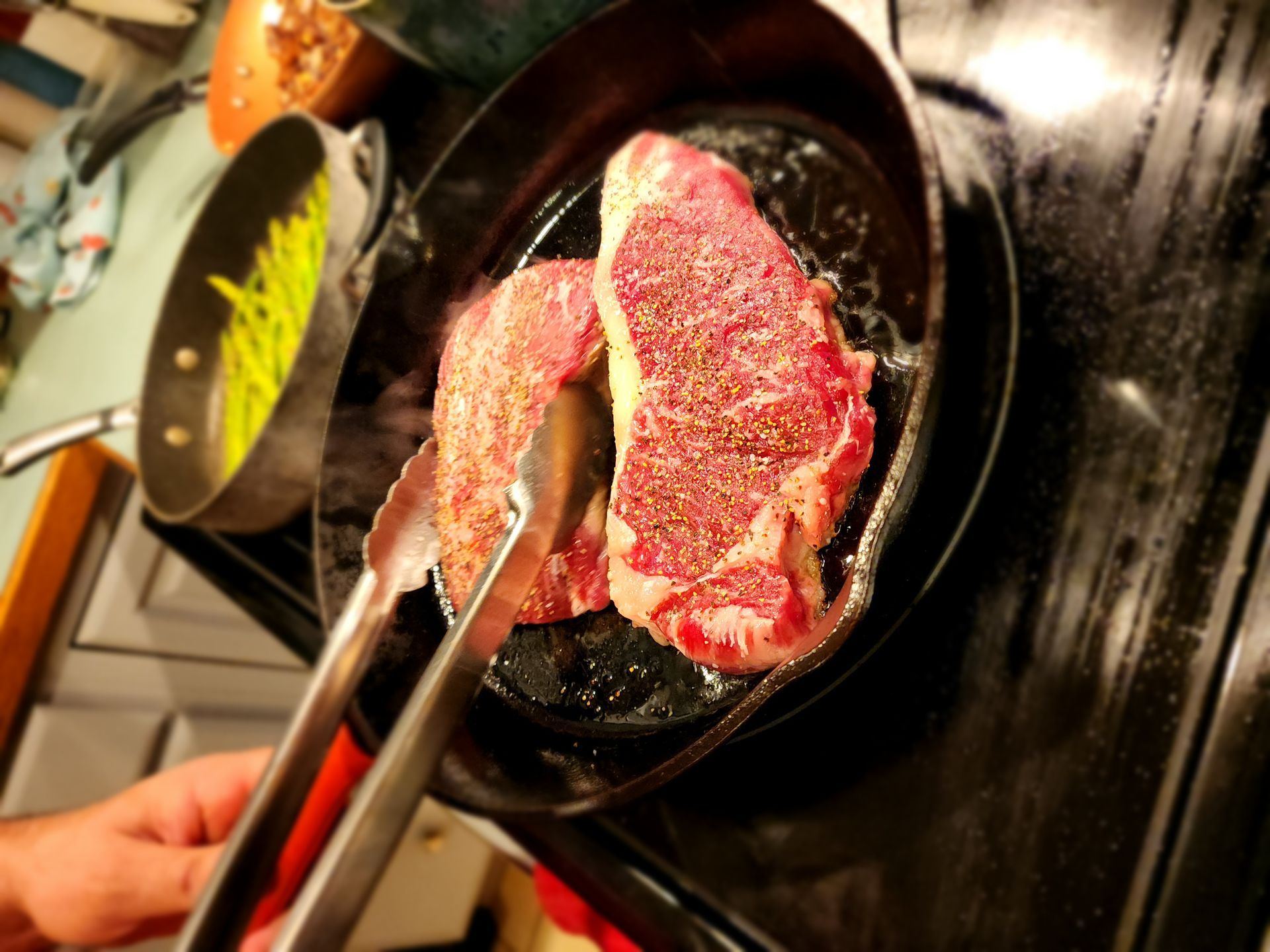
Strip and Flat Iron
Write your caption hereButton
Flat Iron with Salt and Pepper
Write your caption hereButton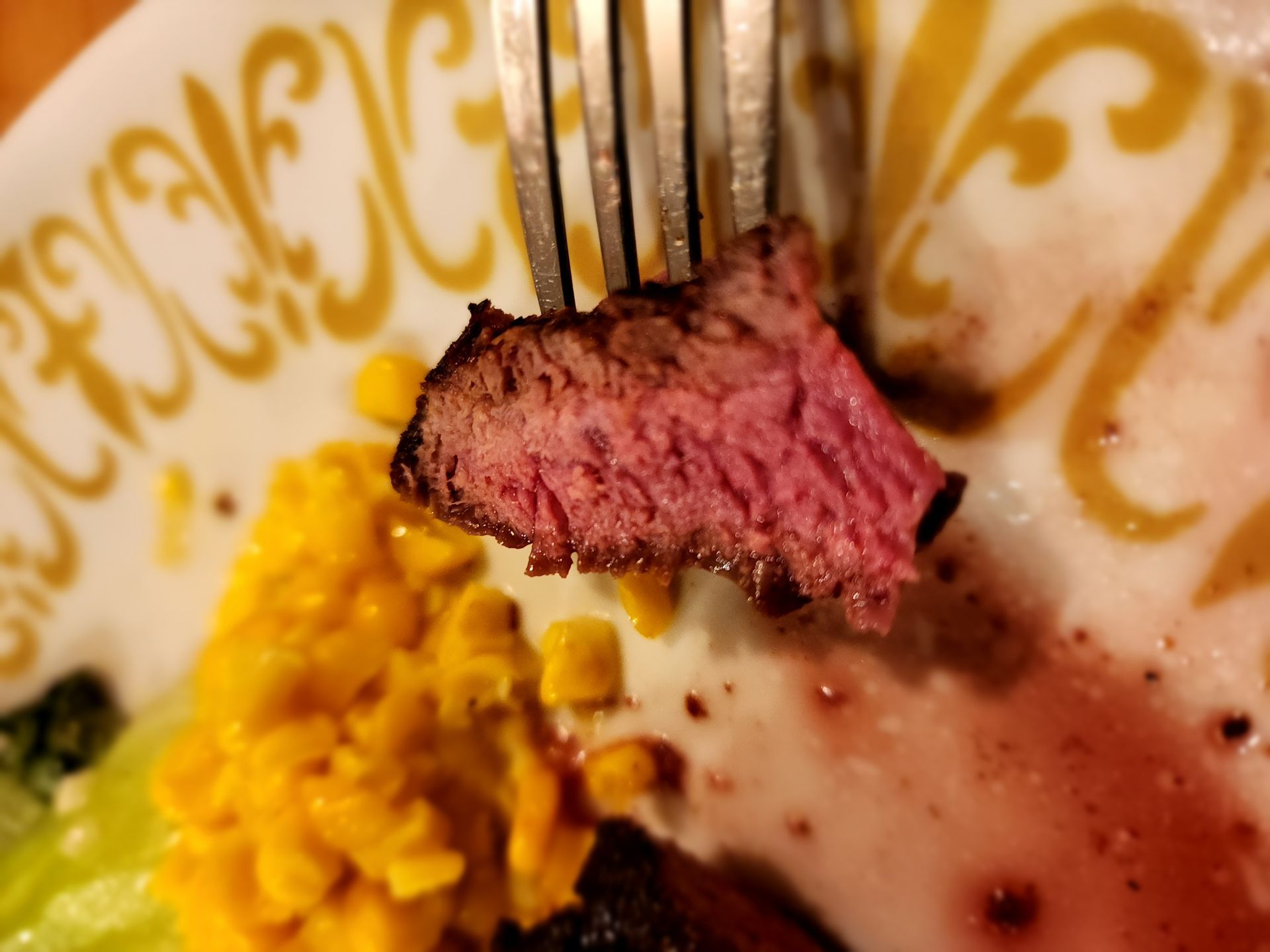
Slide title
Write your caption hereButton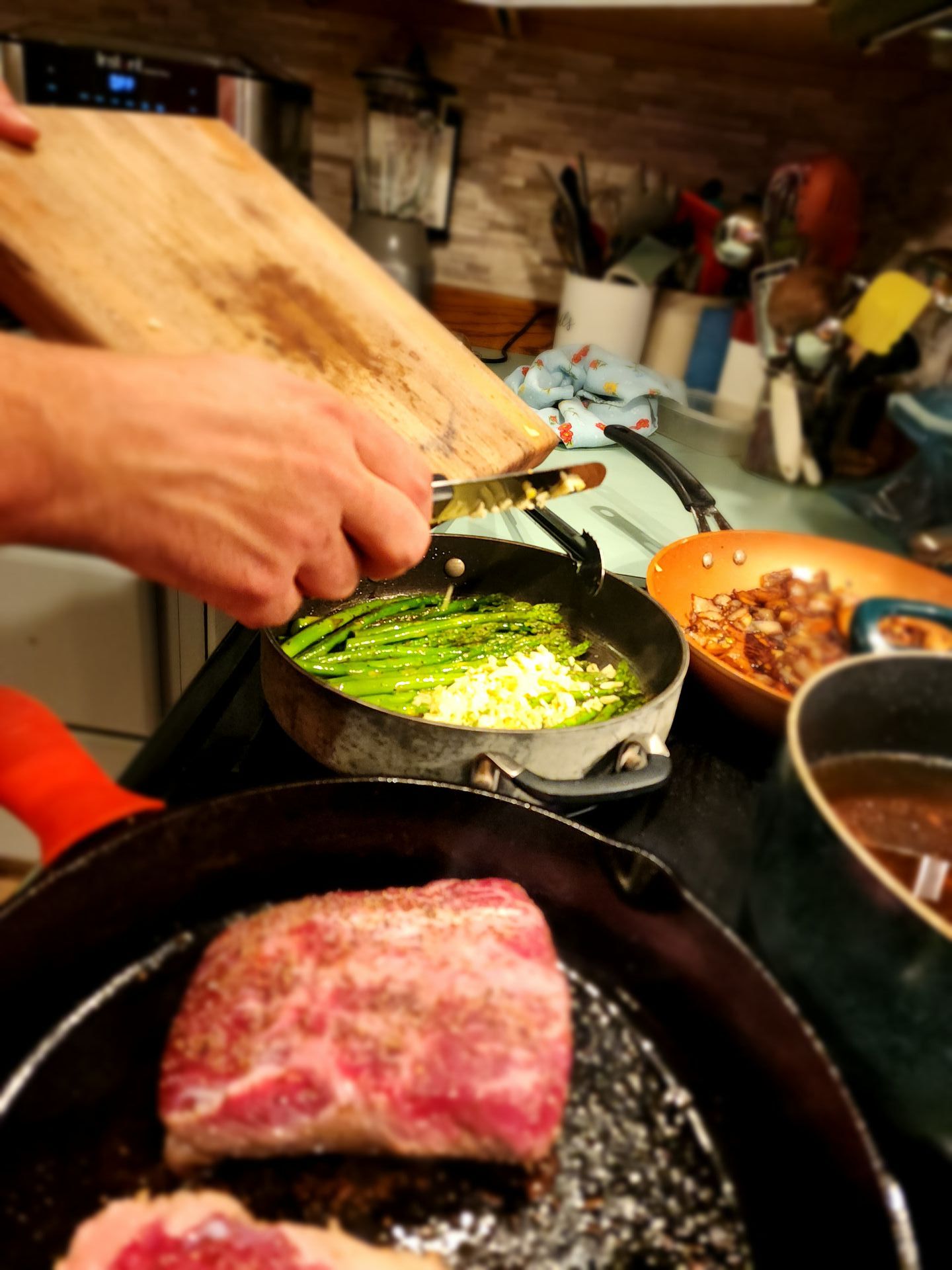
Slide title
Write your caption hereButton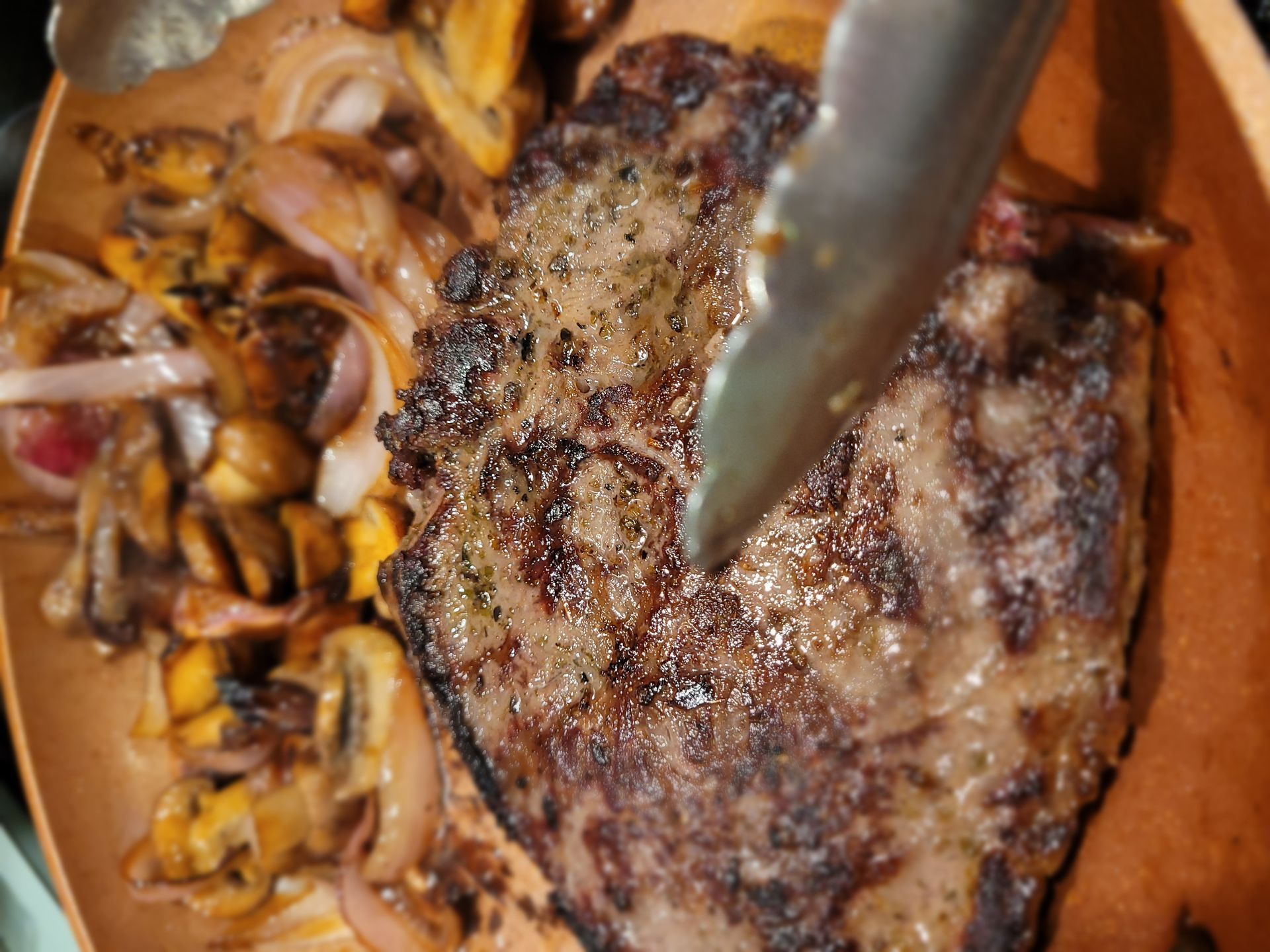
Slide title
Write your caption hereButton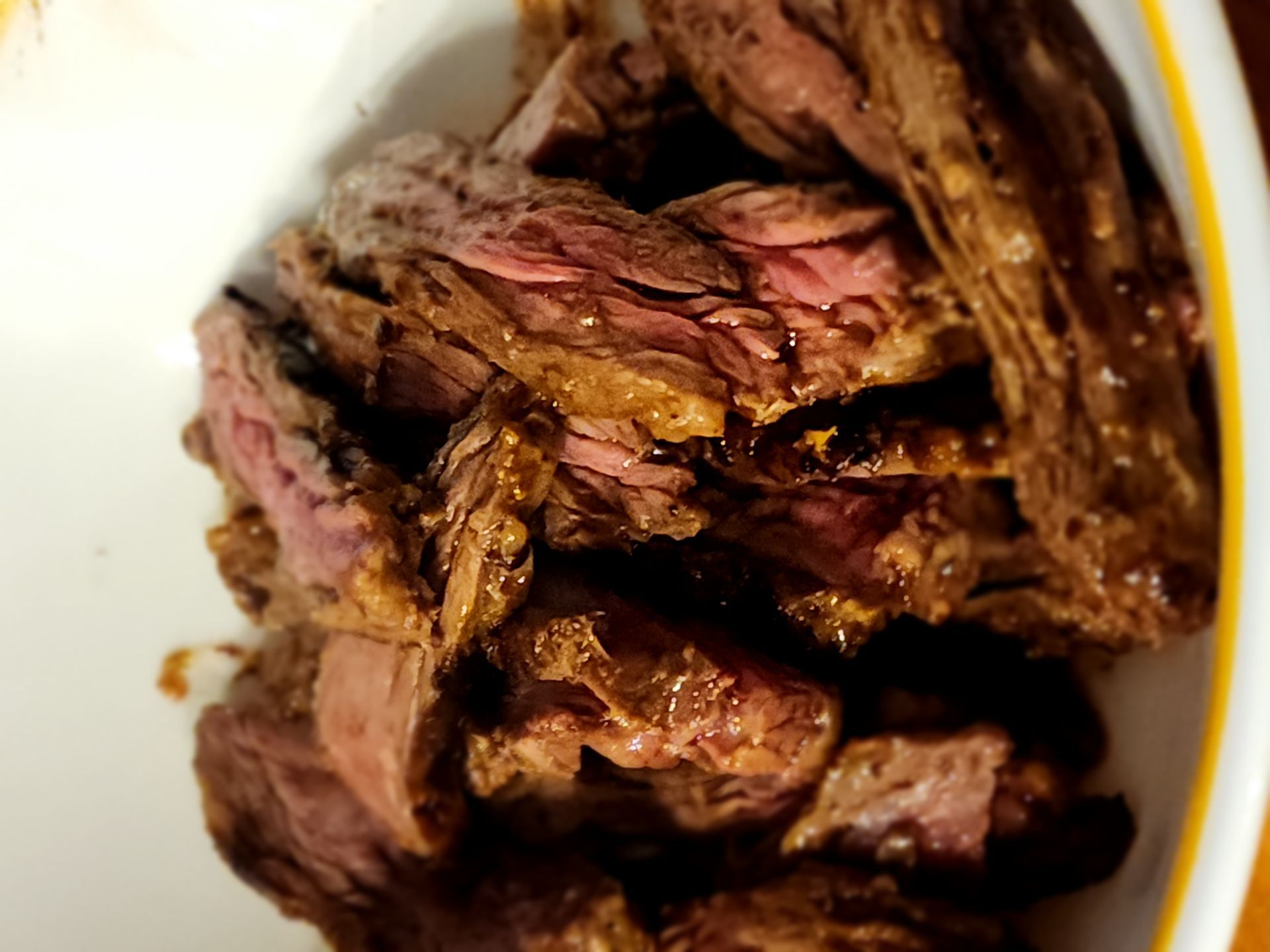
Skirt Steak ready for Taco Night
Write your caption hereButton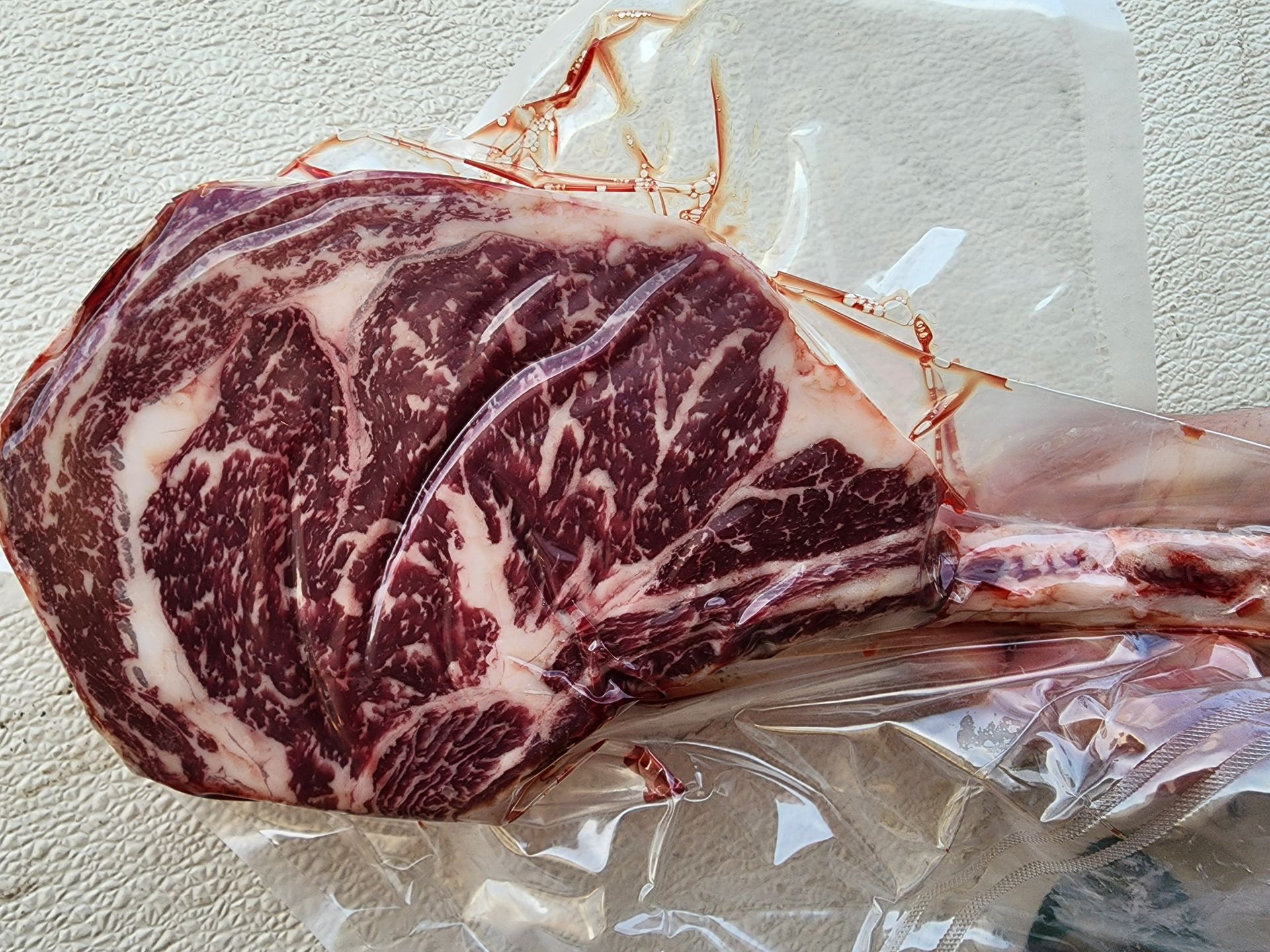
Slide title
Write your caption hereButton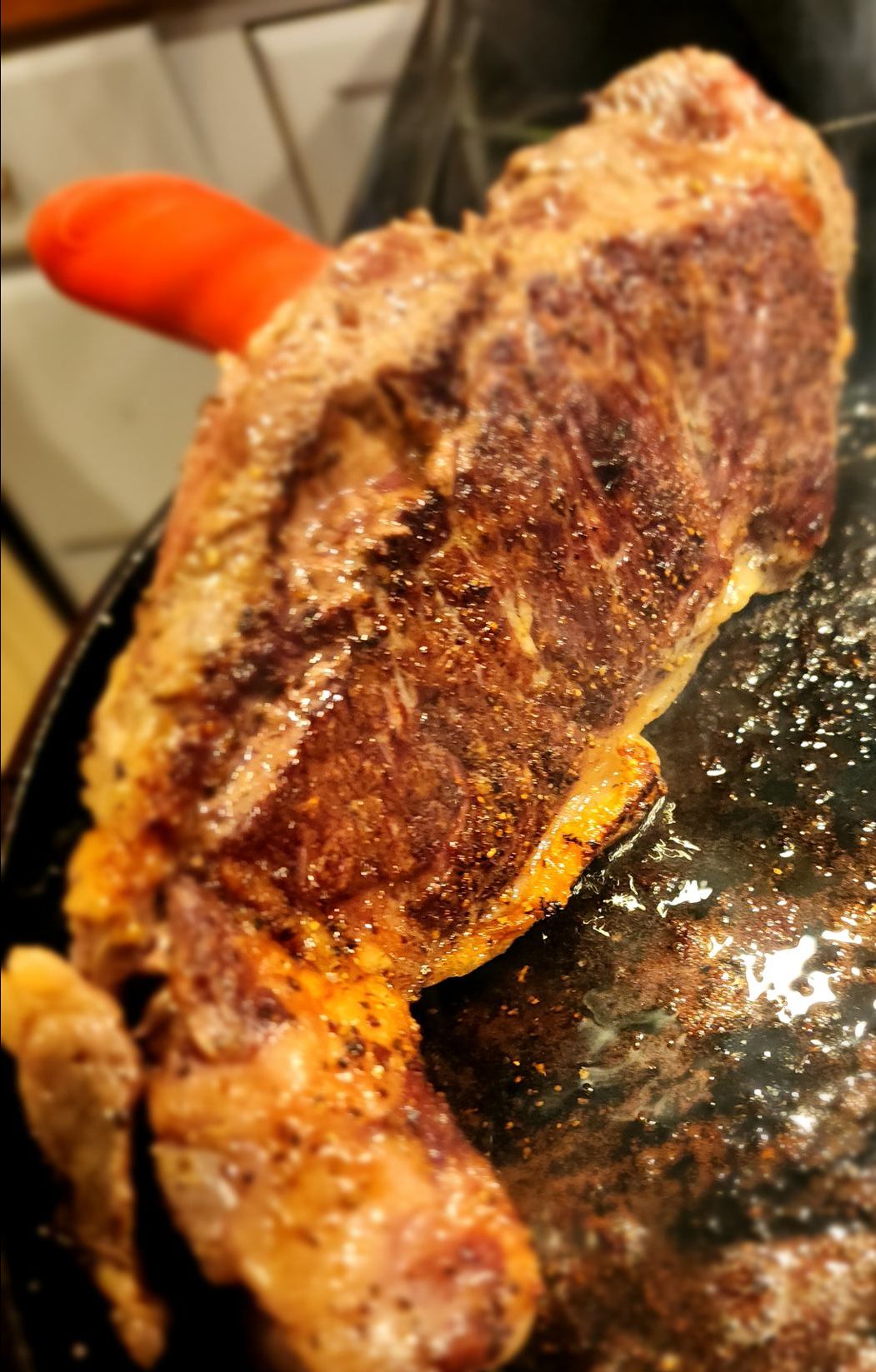
Slide title
Write your caption hereButton
Slide title
Write your caption hereButton
Slide title
This flat iron is an incredible mix of tenderness and flavor!
Button
Slide title
The skir steak is ideal to marinate for fajitas and tacos
Button
Slide title
Watching the marbilization sizzle and melt
Button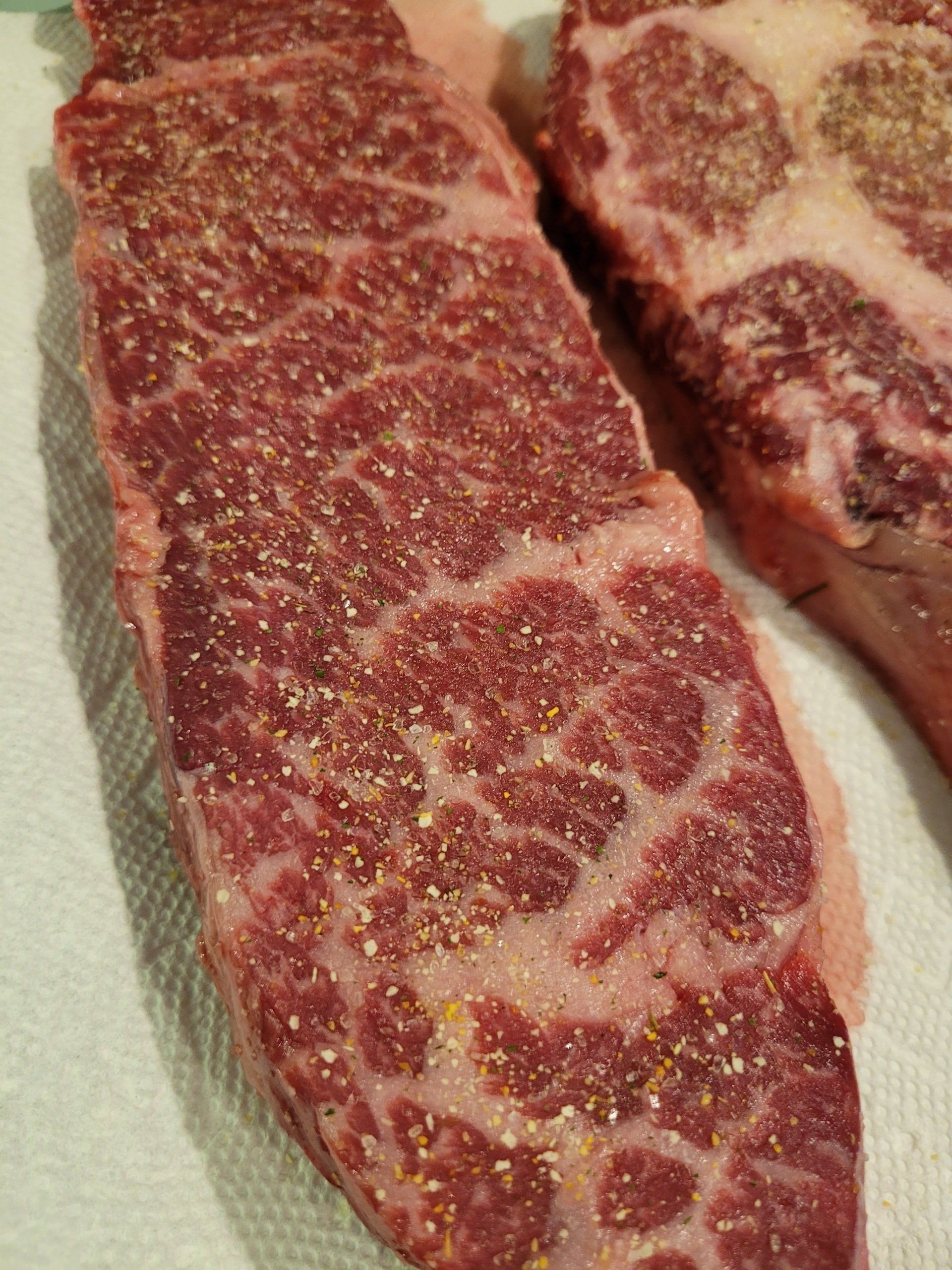
Slide title
Our favorite prep is a little salt and pepper
Button
Slide title
kabobs on the grill
Button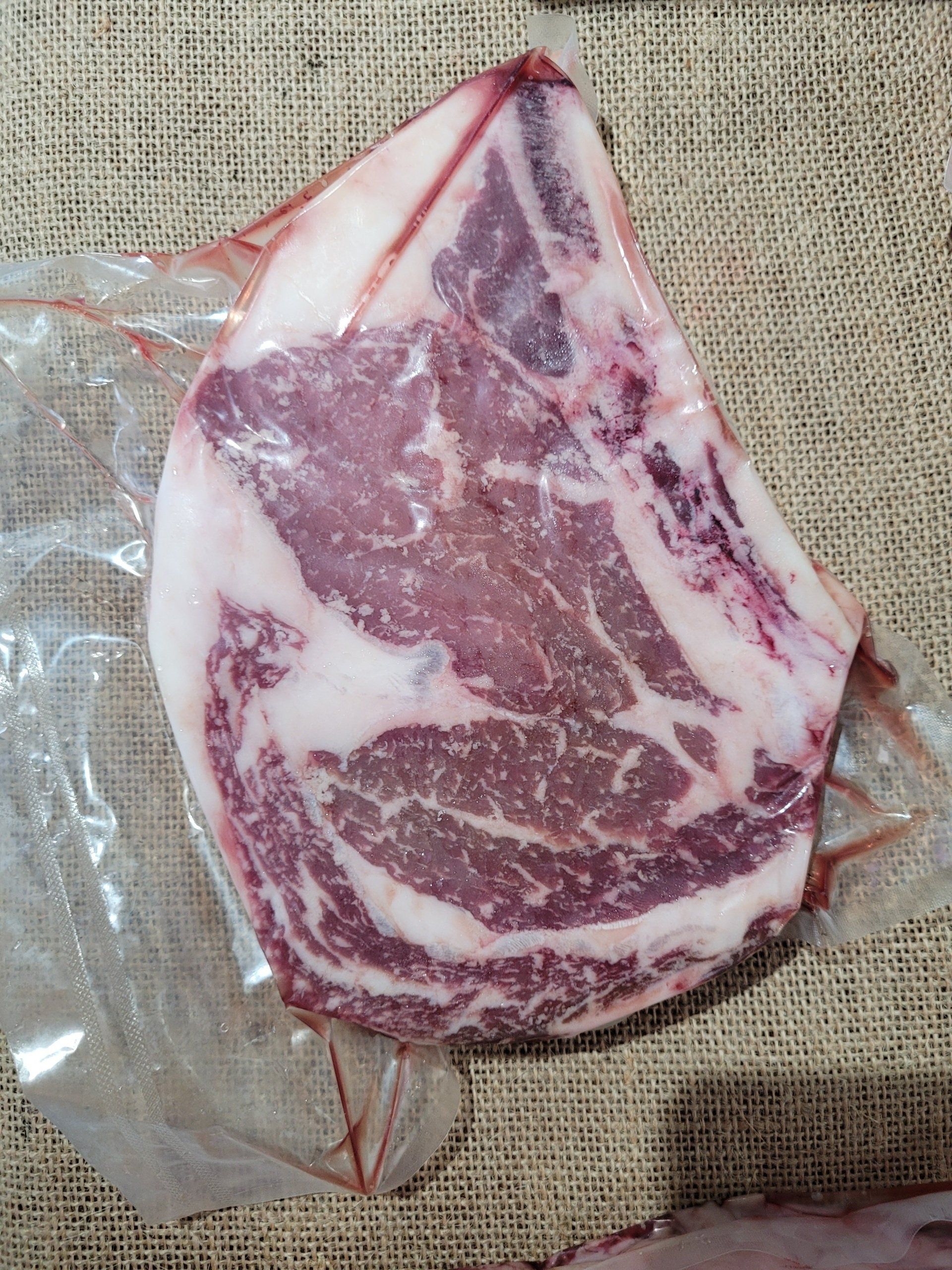
Slide title
Button
Slide title
Write your caption hereButton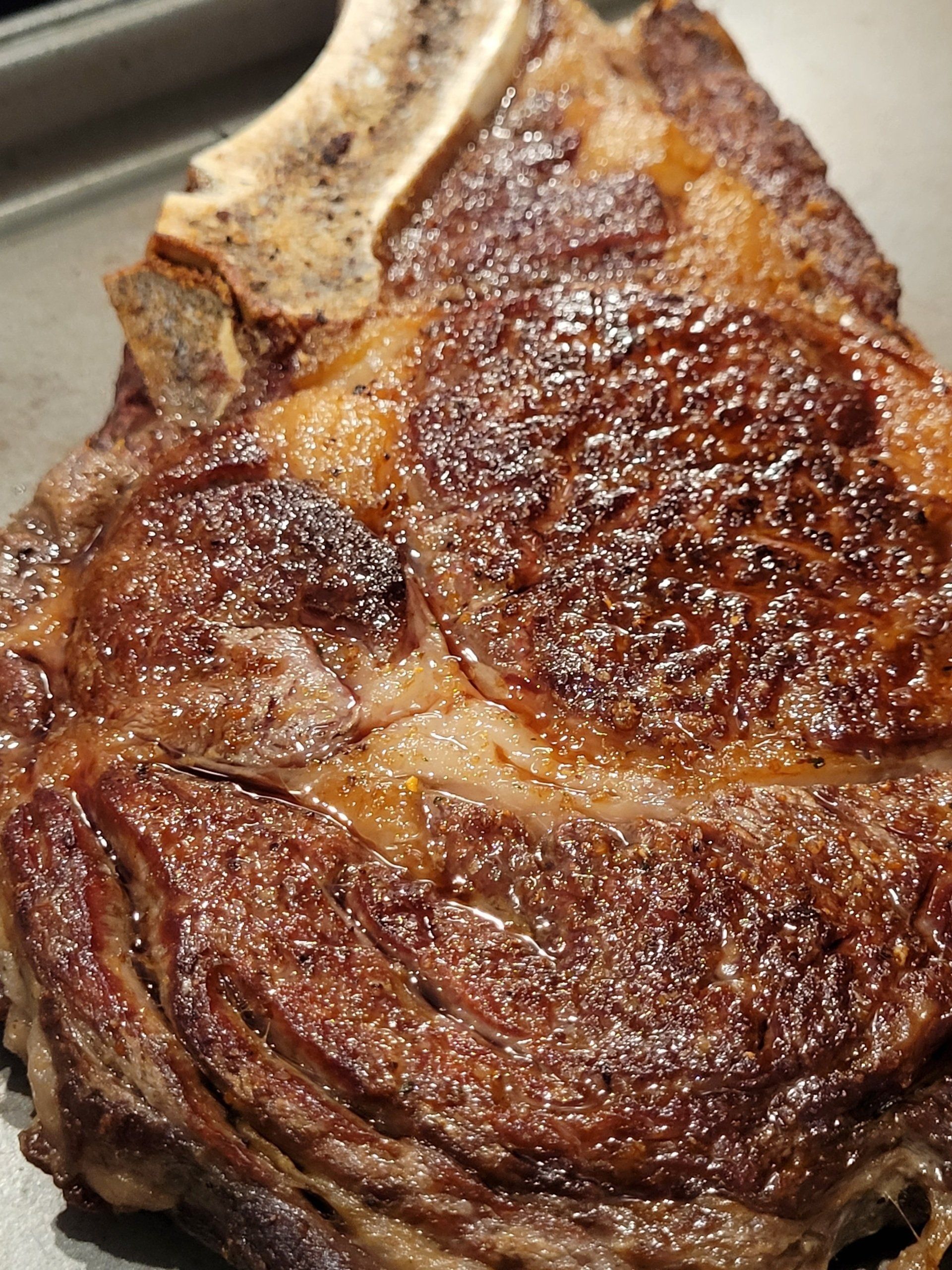
Slide title
Write your caption hereButton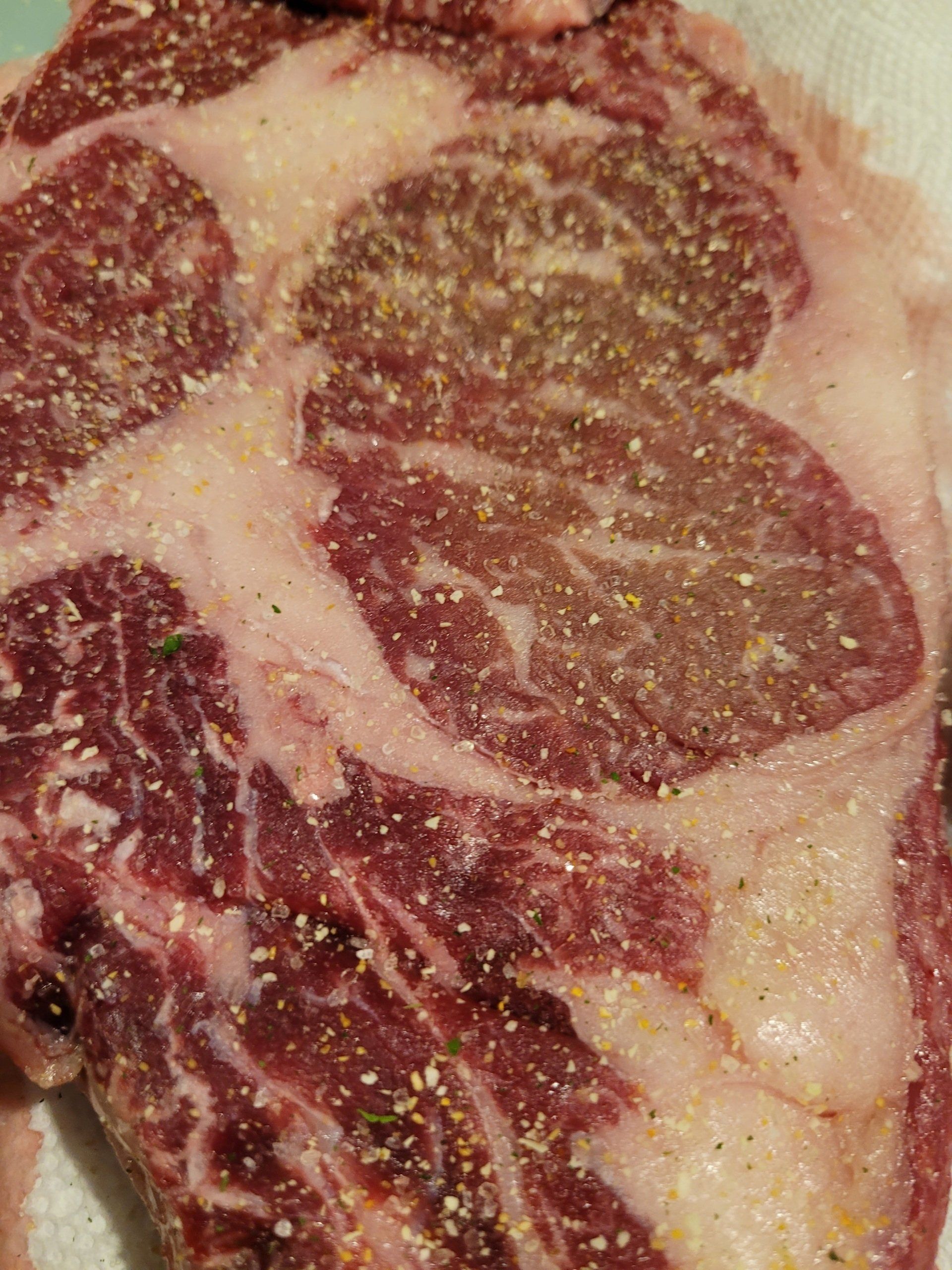
Slide title
Write your caption hereButton
Slide title
Write your caption hereButton
Slide title
Write your caption hereButton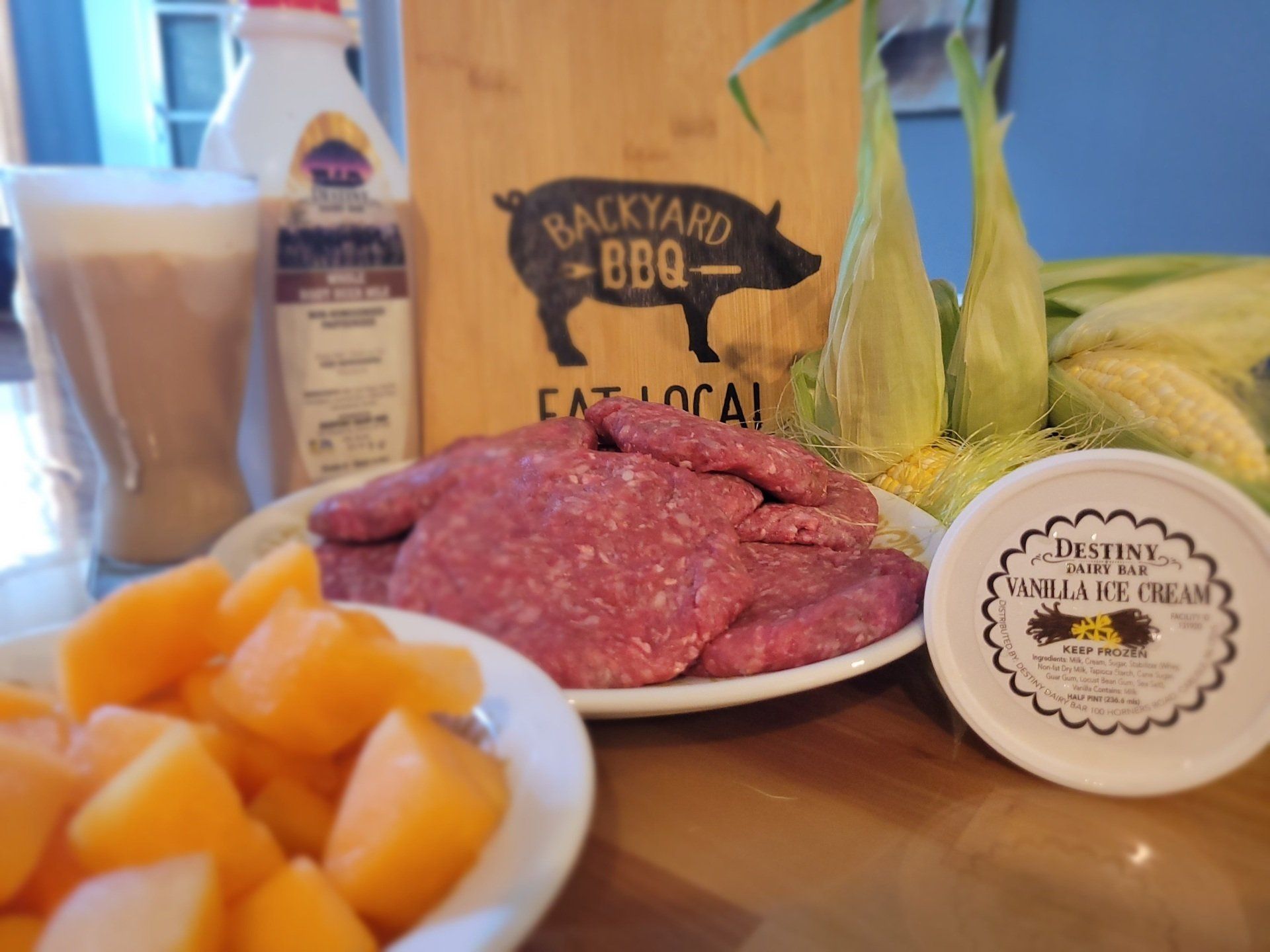
Slide title
Write your caption hereButton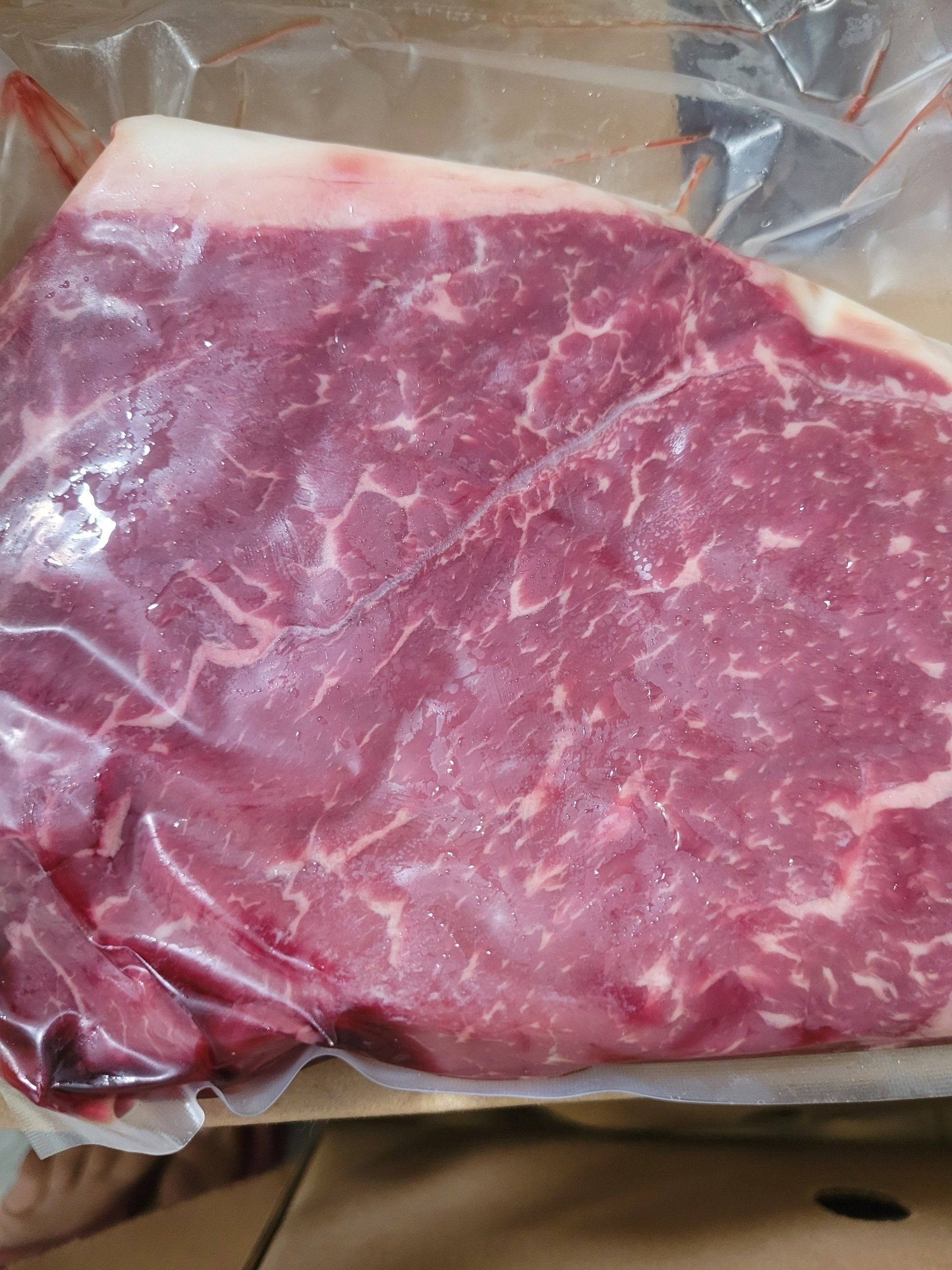
Slide title
Write your caption hereButton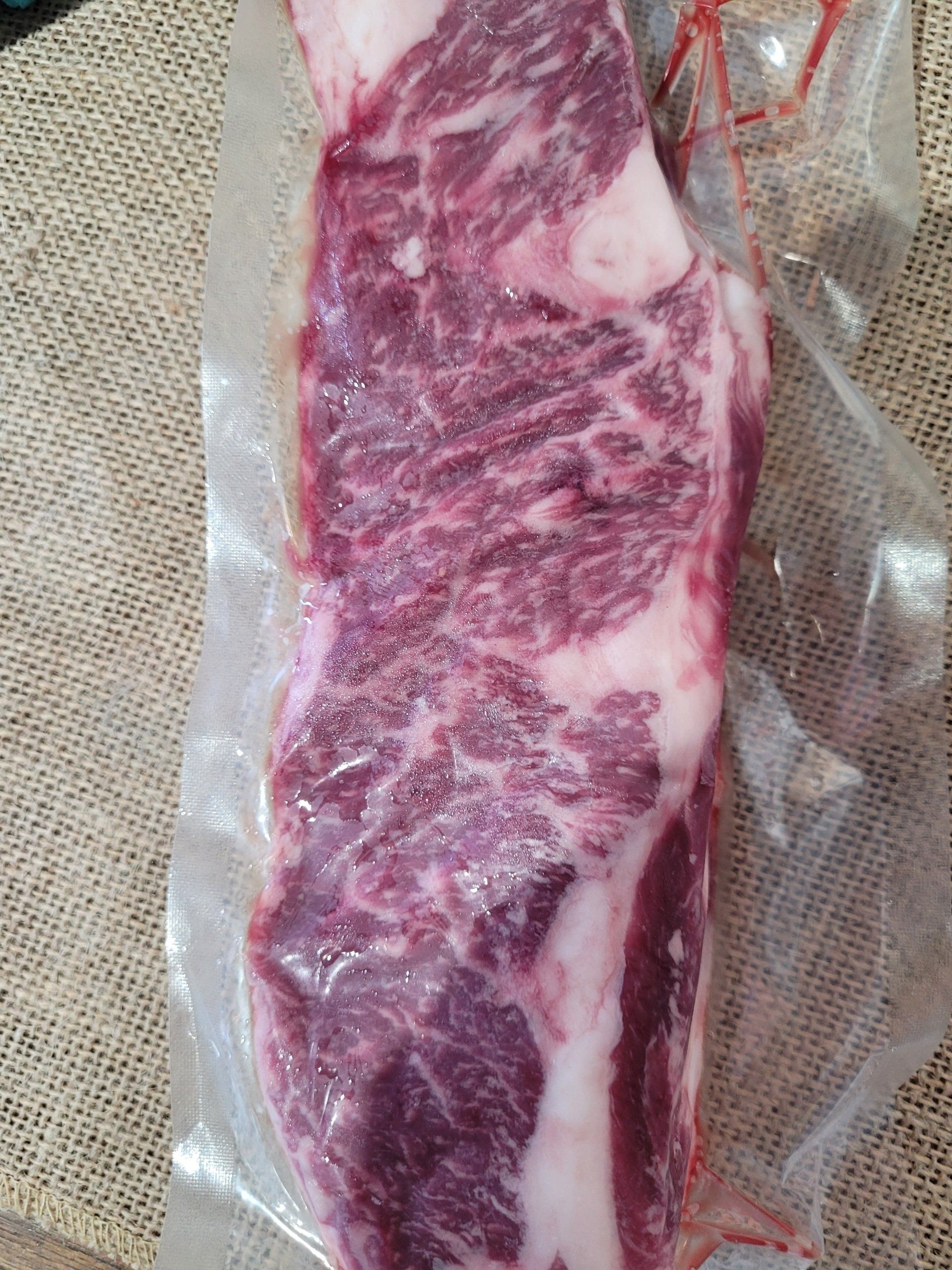
Slide title
Write your caption hereButton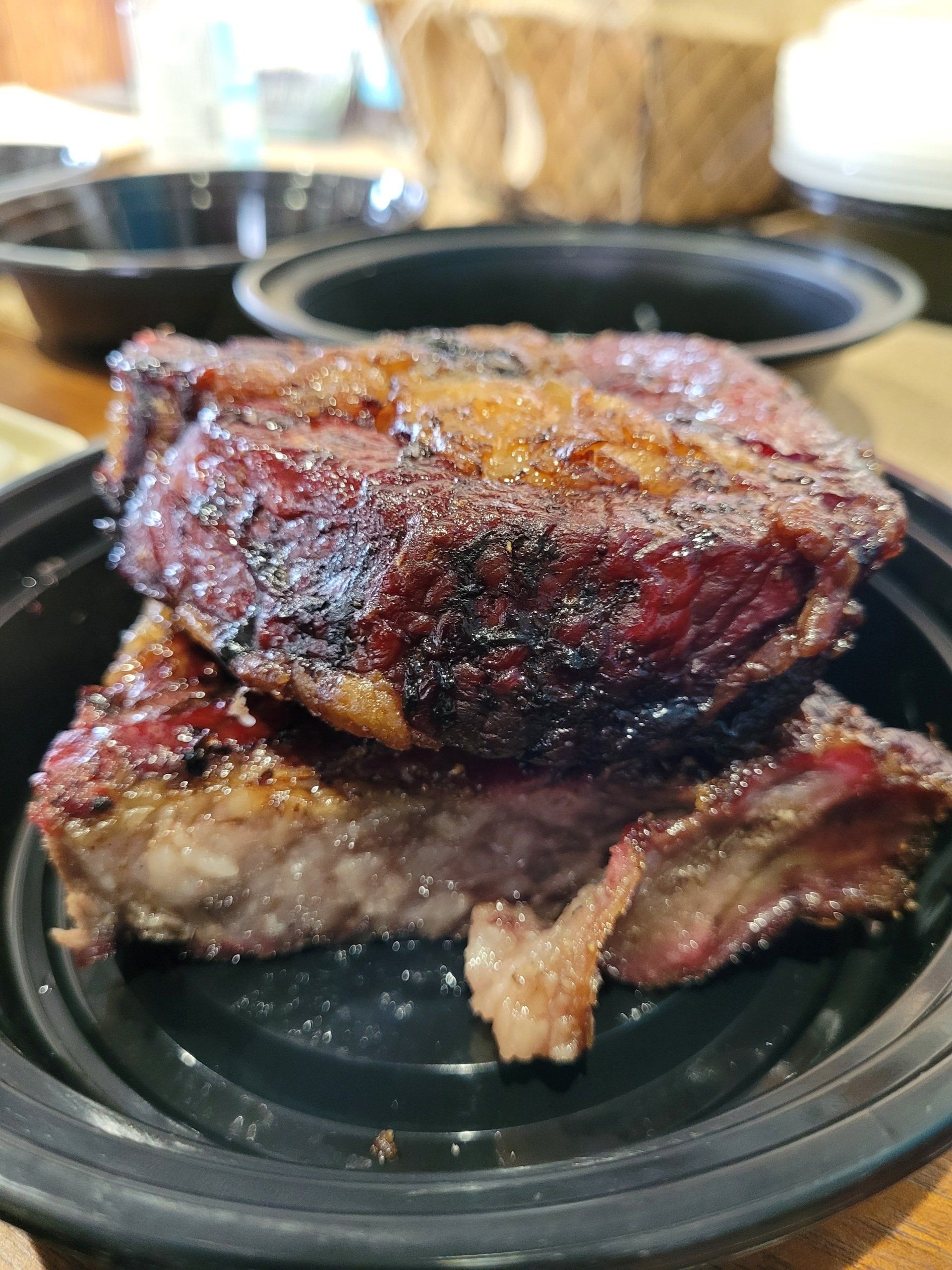
Slide title
Write your caption hereButton
Slide title
Write your caption hereButton
Slide title
Write your caption hereButton
Slide title
Write your caption hereButton
Slide title
Write your caption hereButton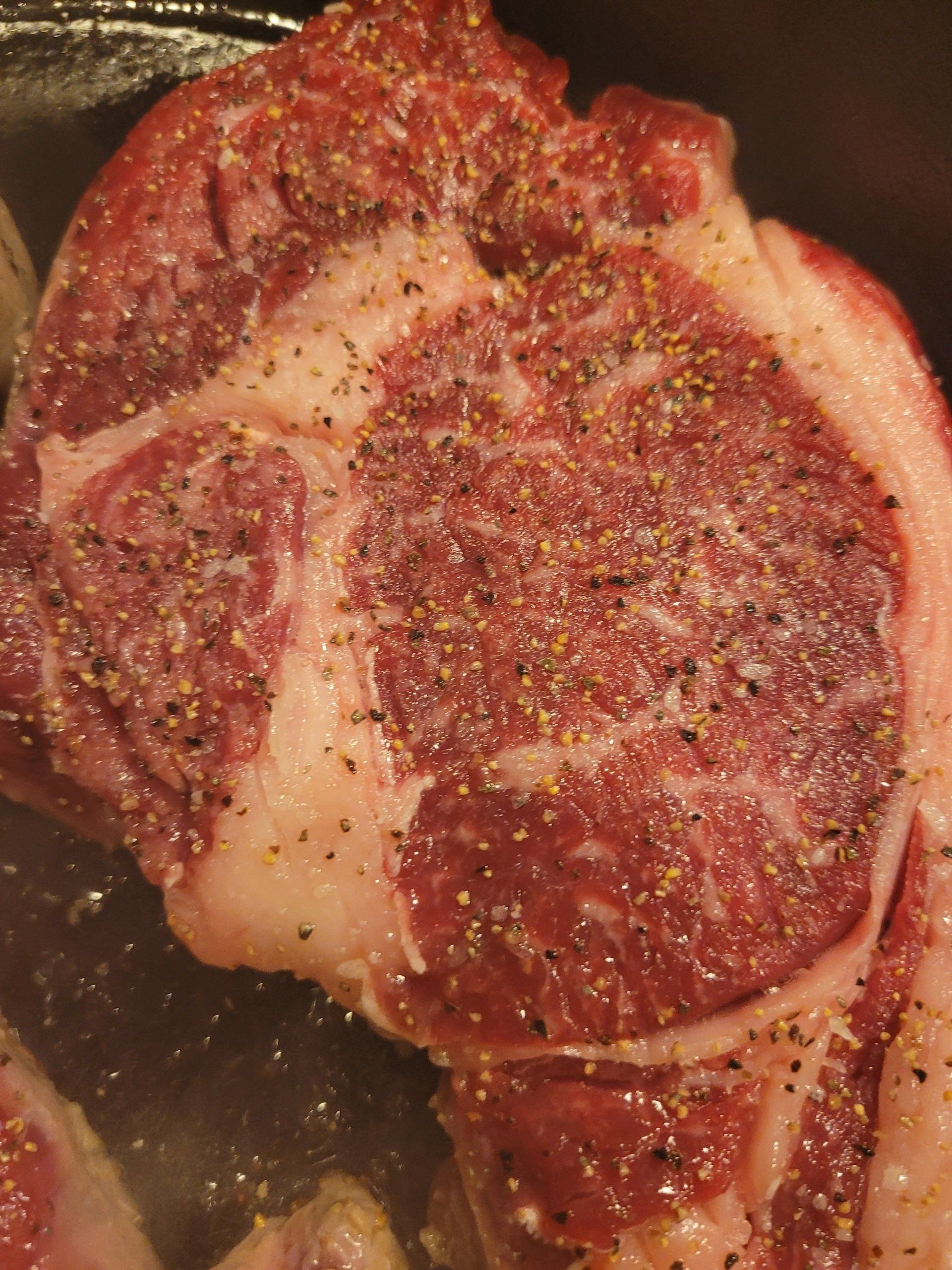
Slide title
Write your caption hereButton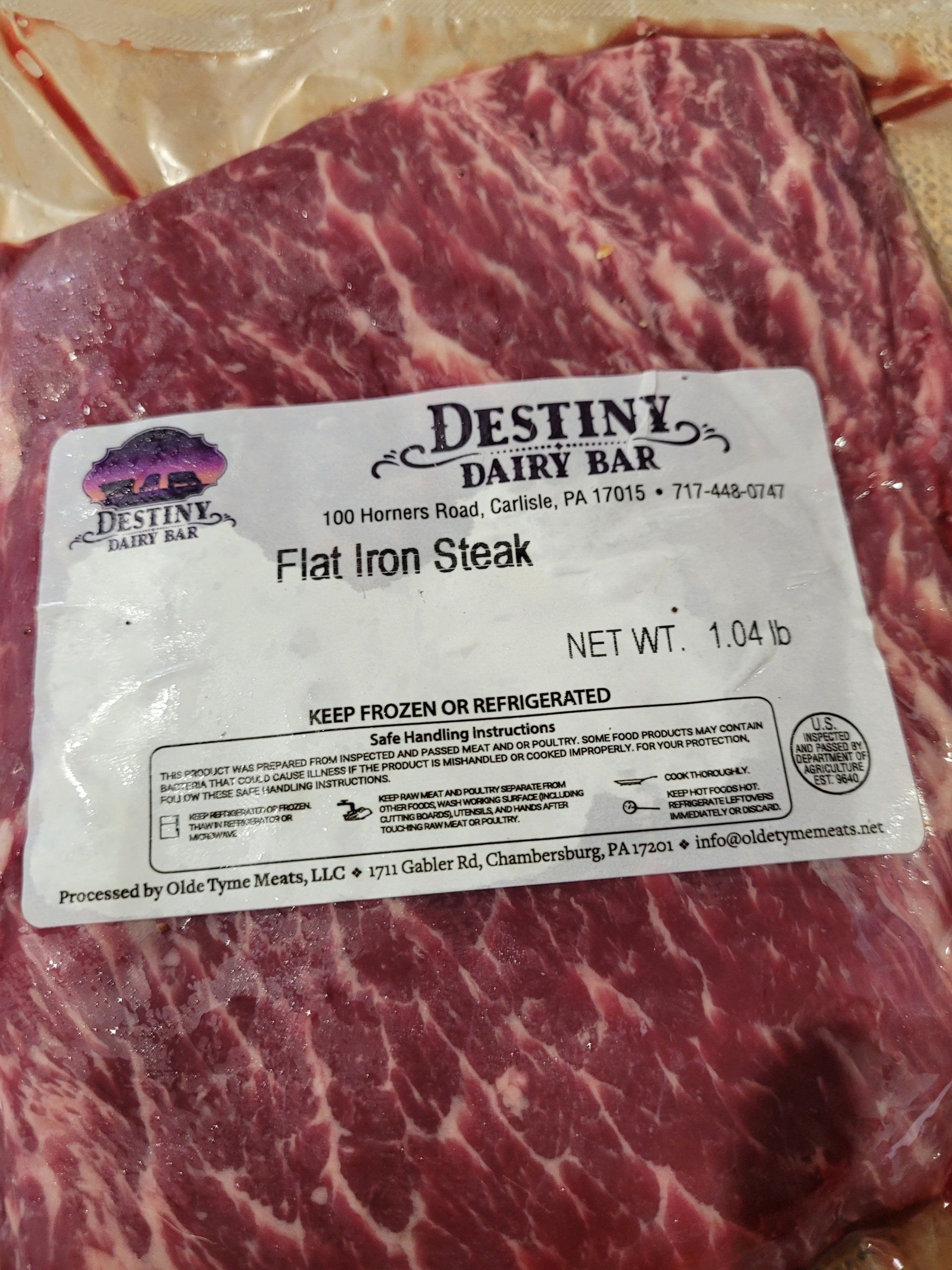
Slide title
Write your caption hereButton
Slide title
Write your caption hereButton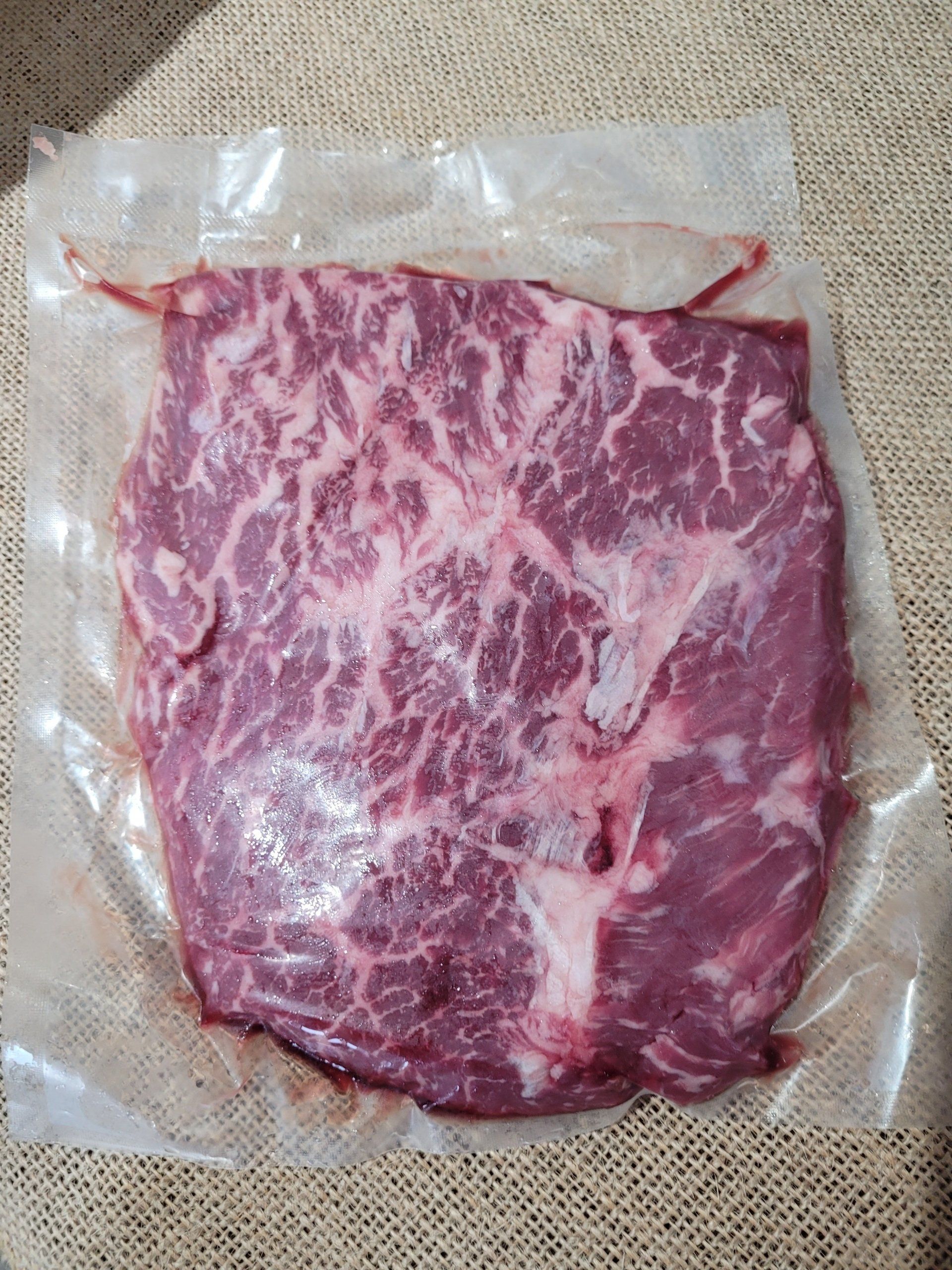
Slide title
Write your caption hereButton
Slide title
Write your caption hereButton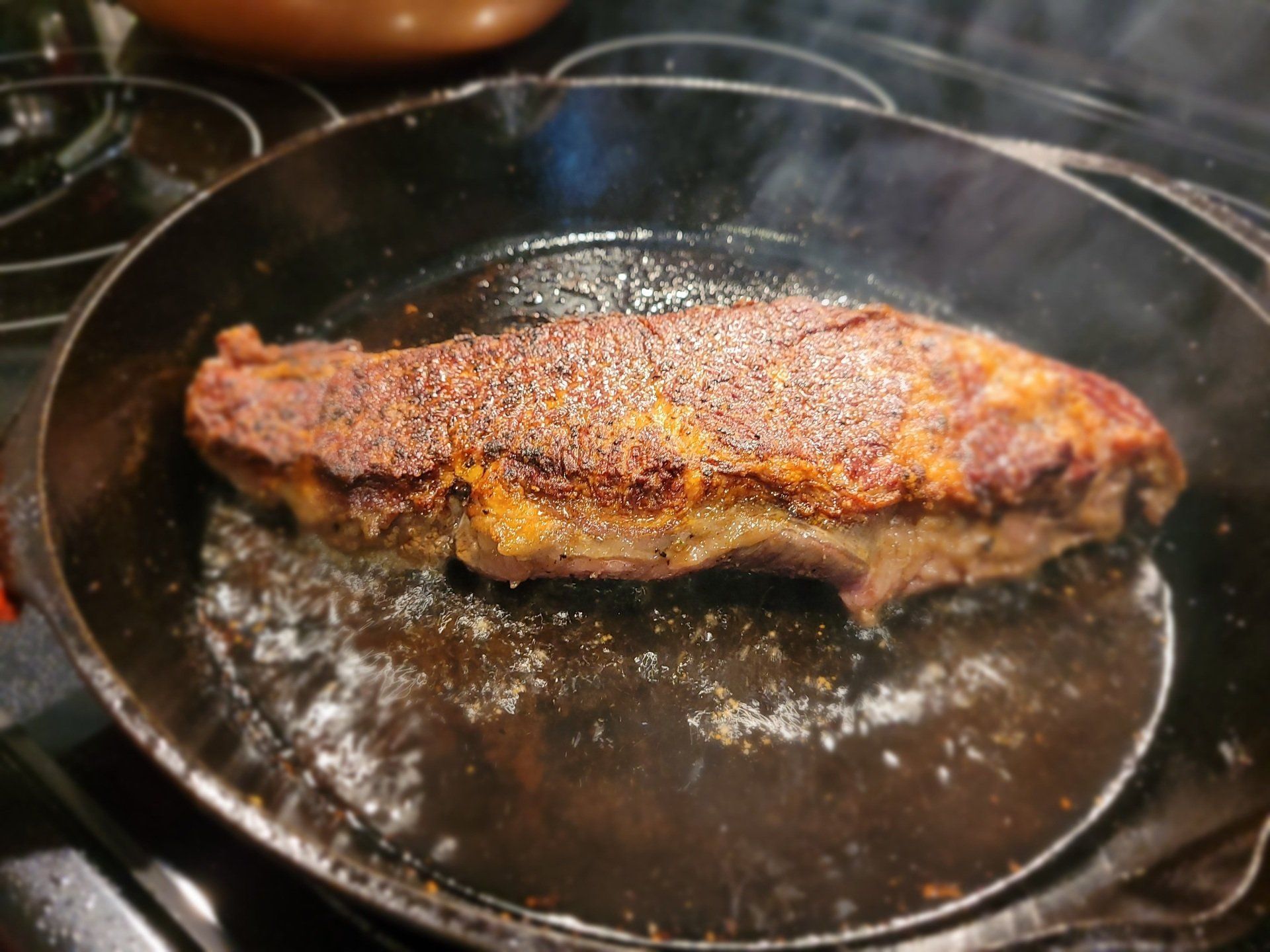
Slide title
Write your caption hereButton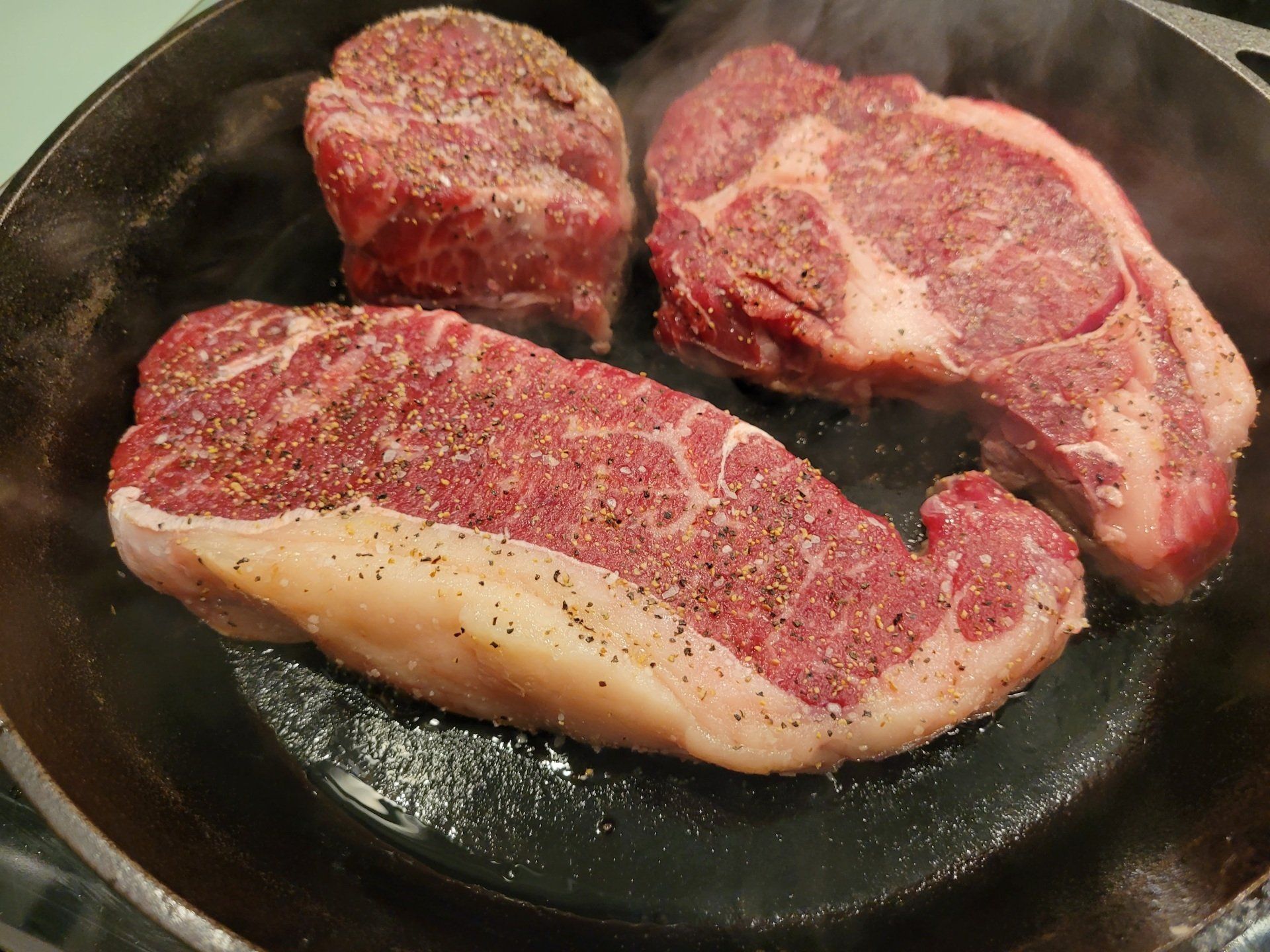
Slide title
Write your caption hereButton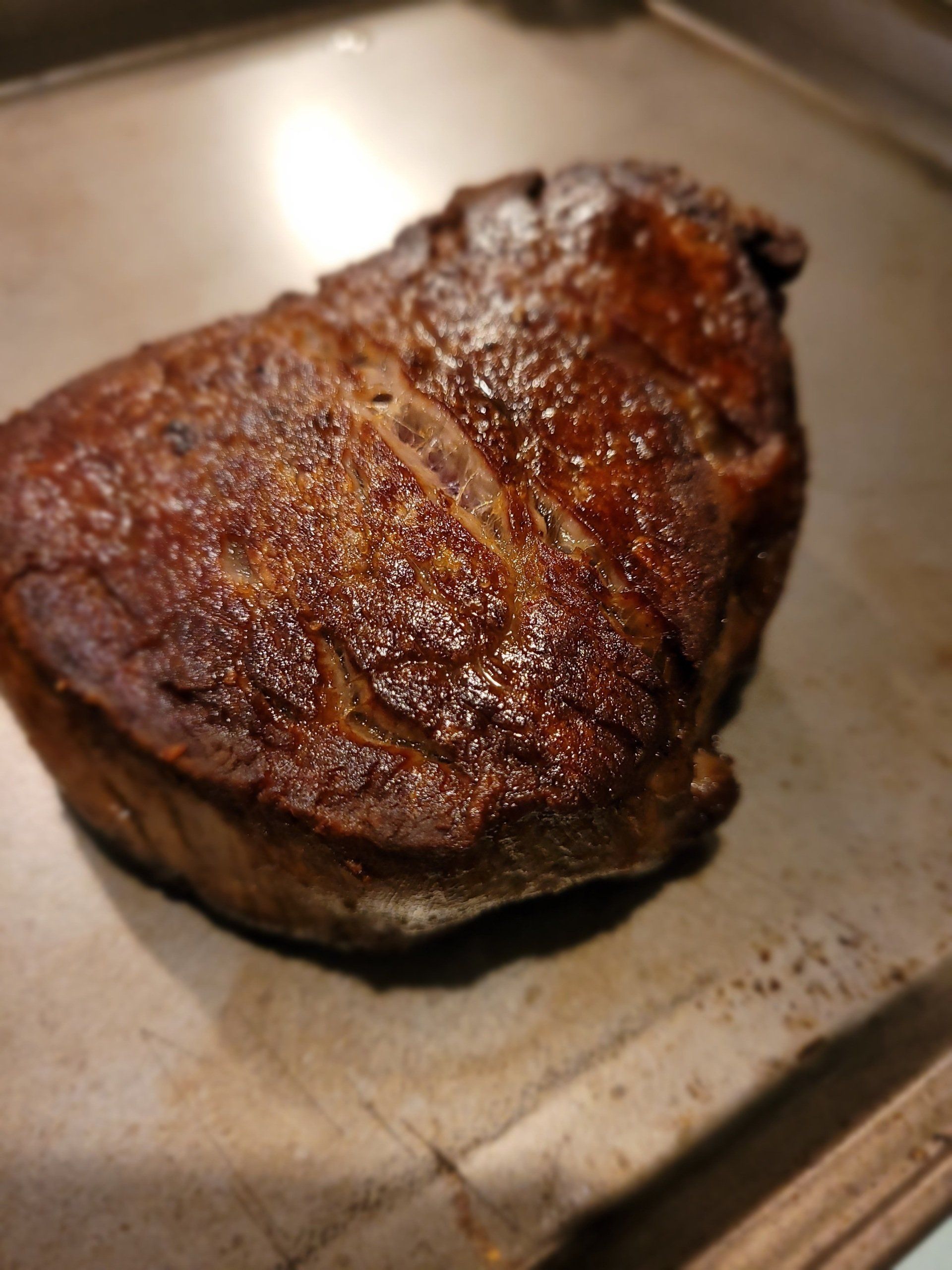
Slide title
Write your caption hereButton
Slide title
Write your caption hereButton
Slide title
Write your caption hereButton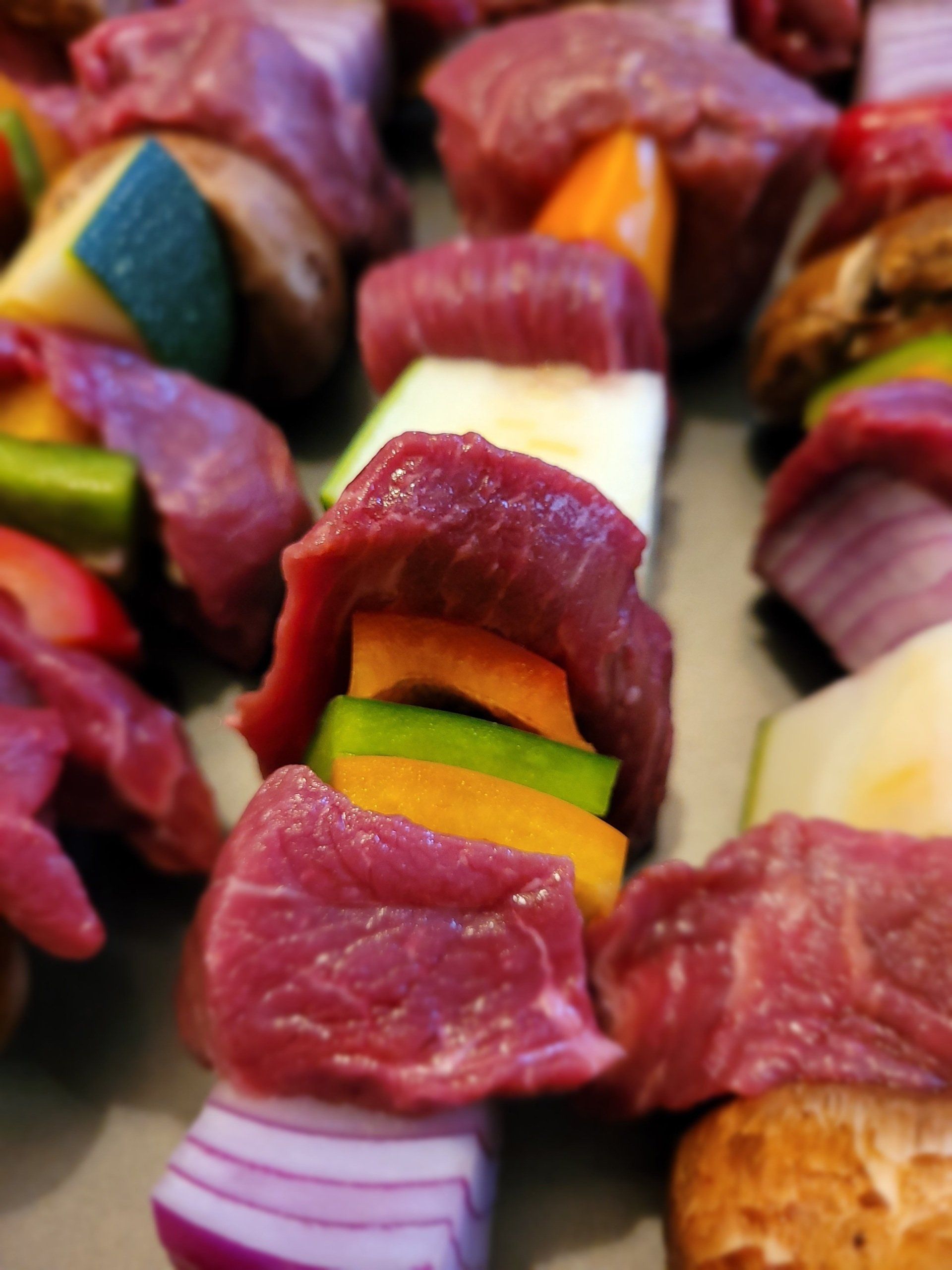
Slide title
Write your caption hereButton
Slide title
Write your caption hereButton
Slide title
Write your caption hereButton
Slide title
Write your caption hereButton
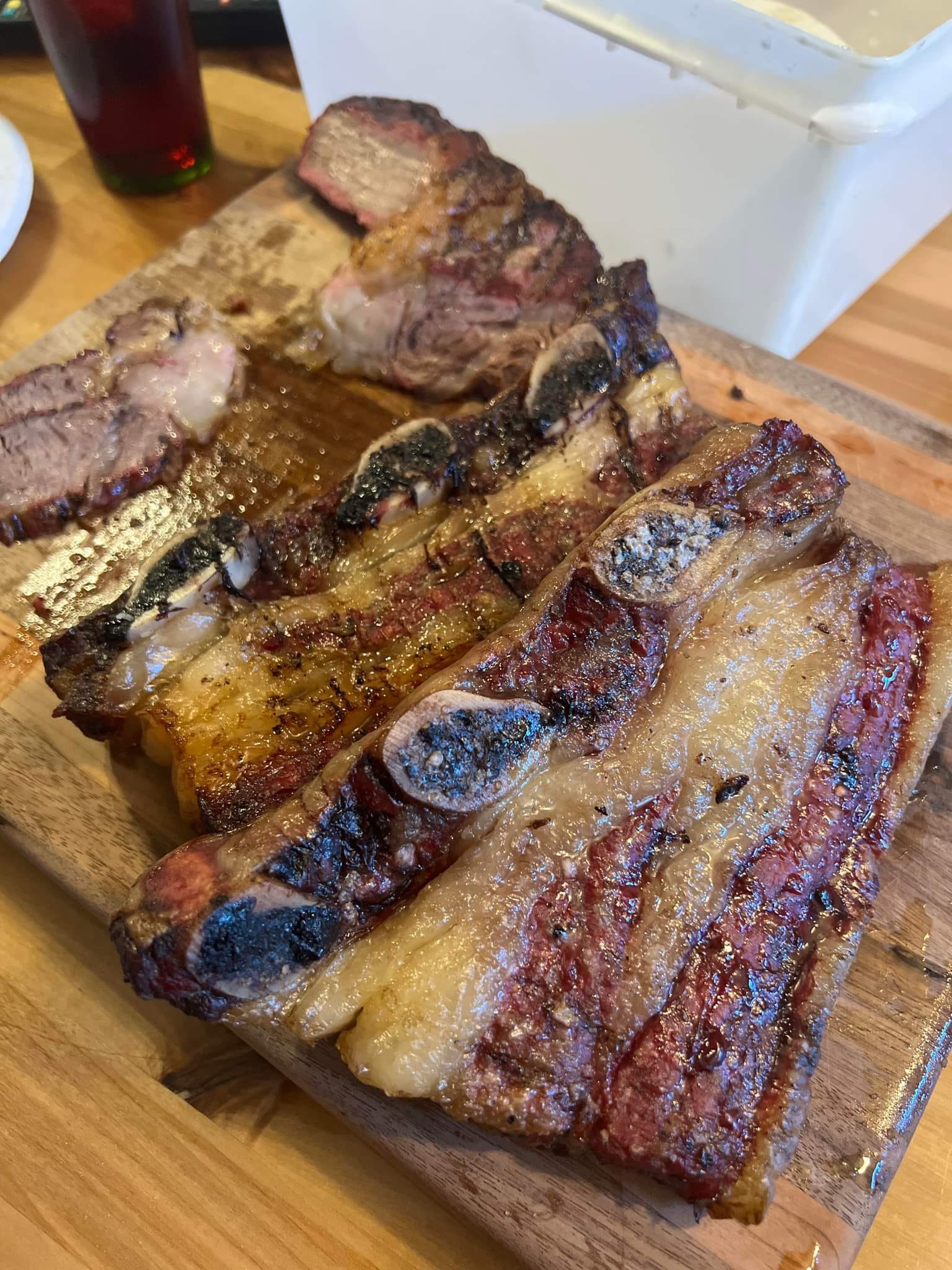
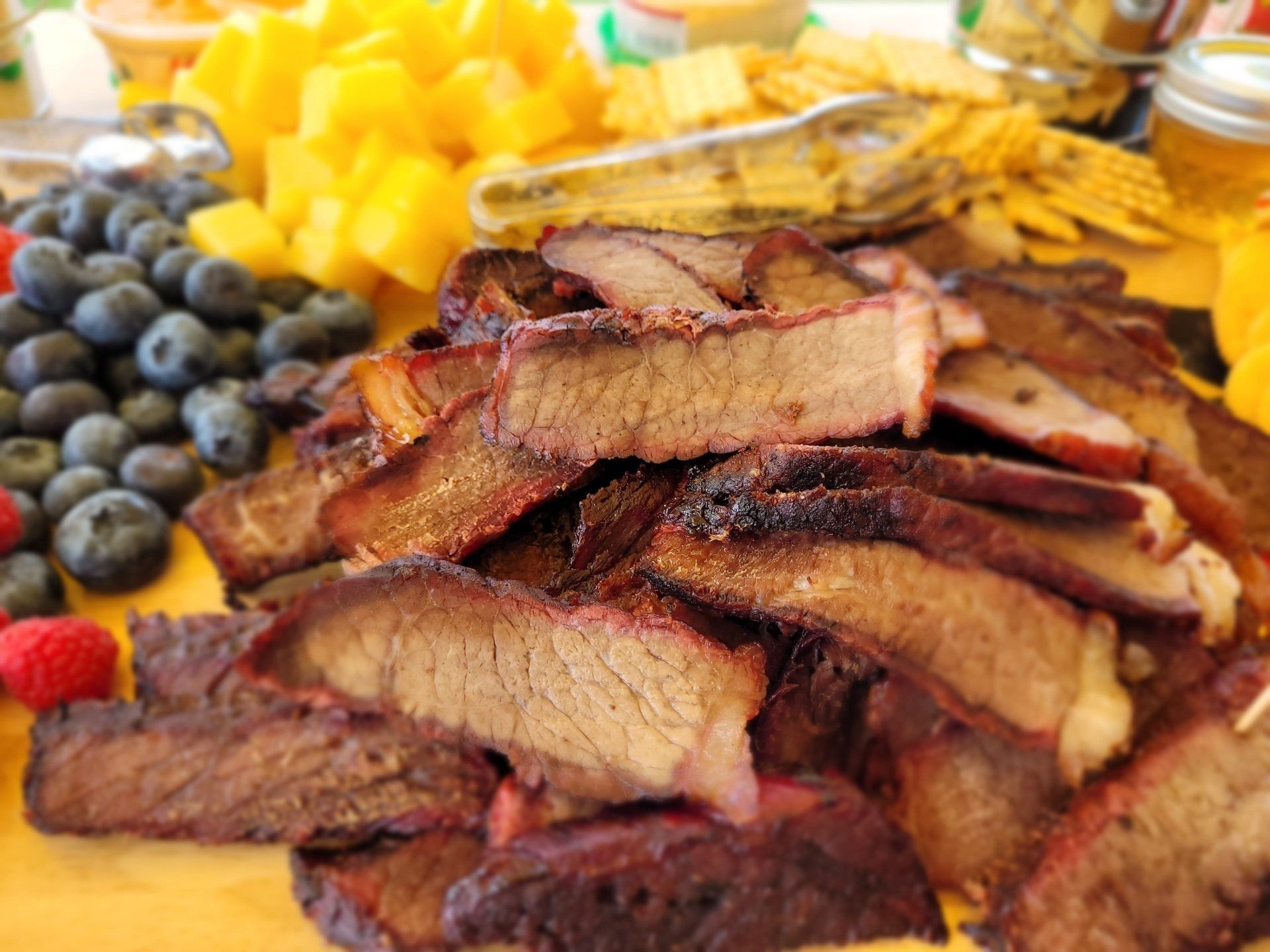


SIRLOIN
Located at the back end of the cow, the sirloin is divided into the Top Sirloin and Bottom Sirloin. The top is considered a leaner cut that offers good flavor and moderate tenderness. Top Sirloin doesn't exhibit the premium attributes of Wagyu such as intense marbling as some others, but it is still a delicious cut of meat that makes a terrific entree, cooks nicely with marinades and brings big flavor to recipes. It is a popular choice because it's more affordable than filet yet still delicious and can be cooked by frying, grilling, broiling or roasting.

SKIRT STEAK
This cut is located just underneath the rib, towards the belly and part of the diaphragm, it is boneless and has a great flavor. When prepared properly, the delightfully marbled Wagyu skirt can have a soft, delicious texture. It is the primary ingredient for carne asada, and is great when marinated and grilled, roasted or sauteed in many Asian or Mexican recipes. Try marinating in vinegar, Worcestershire or soy sauce and cook on high heat for a short amount of time to break down the long muscle fibers. You can also cut it against the grain to preserve the juices and make it more tender. Our skirt is long and varies in thickness from the ends to the thicker middle offering both medium rare and carmelized crisp when prepared together.

FLAT IRON
The Flat Iron steak is one of the most tender parts of the cow, despite being sliced from the tougher shoulder section (also known as the top chuck or top blade). It's well-marbled, leading to intense flavor, especially in Wagyu cattle. Try it with your favorite rub or marinade, grilled, broiled and serve whole or slice it thin for a great fajita or sandwich.

DENVER STEAK
Denver steak is cut from the under blade of the chuck roll (so someone basically found the very best part of the shoulder). It is tender and flavorful with the umami taste Wagyu beef is known for. Also known as the Zabuton Steak, it has deep marbling and very uniform thickness, so use a reverse sear.

RANCH STEAK
The Ranch Steak comes from the chuck primal, the section of the cow closest to the head. Do not overcook (more than medium with dry heat) or it will be too tough. Instead, try braising, or marinade and grill, broil or fry this small steak and it will be a lovely meal!

